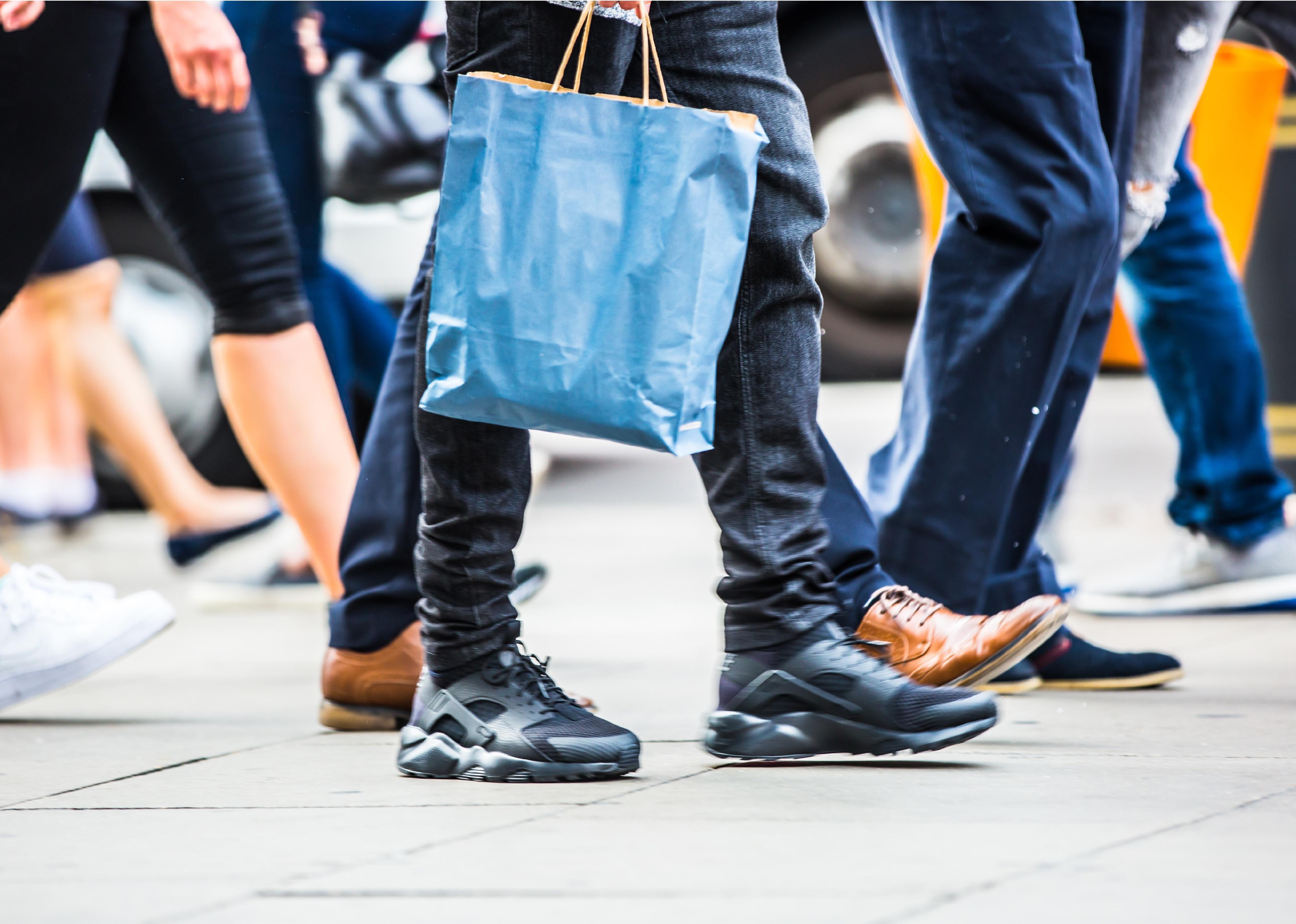
States where business foot traffic has fallen the most
States where business foot traffic has fallen the most
The coronavirus crisis has afflicted the United States with simultaneous disasters—a public health emergency and an economic emergency. Just as there is no vaccine for COVID-19, there is also no magic formula for when and how businesses can open, when people can go back to work, and when the economy can reopen without prolonging or worsening the pandemic.
One thing, however, is certain—businesses across America are being crushed under the weight of the crisis. Much of that pain is the result of one thing—a near-complete dropoff in foot traffic to businesses across the country. While essential businesses have remained open, others have been shuttered for weeks on end, with millions of Americans cooped up at home ordering things online to be delivered to their doors instead of shopping in person.
The result has been massive unemployment, the likes of which haven't been seen since the Great Depression. Countless businesses—and in some cases, entire industries—are on life support. While the repercussions for states have varied, each state has experienced a 50% or more reduction in foot traffic.
Stacker compiled a list of the states where business foot traffic has fallen the most between the weeks of March 1 and April 12 using data from SafeGraph.
SafeGraph gathered the data through an aggregated technology called SafeGraph Places Patterns, which summarizes foot traffic in 6 million North American points of interest. The samples represent a broad balance of both geography and demographics. It samples a panel of opt-in smartphones—anonymized for privacy—and lists foot traffic data by brands like McDonald's or Costco or by categories such as supermarkets or airports.
To contextualize the 2020 data, SafeGraph displays data from both 2019 and 2020 because many categories have seasonal and week-to-week variability represented in both years. Generally speaking, however, the data from 2020 shows significant deviations from the same period in 2019.
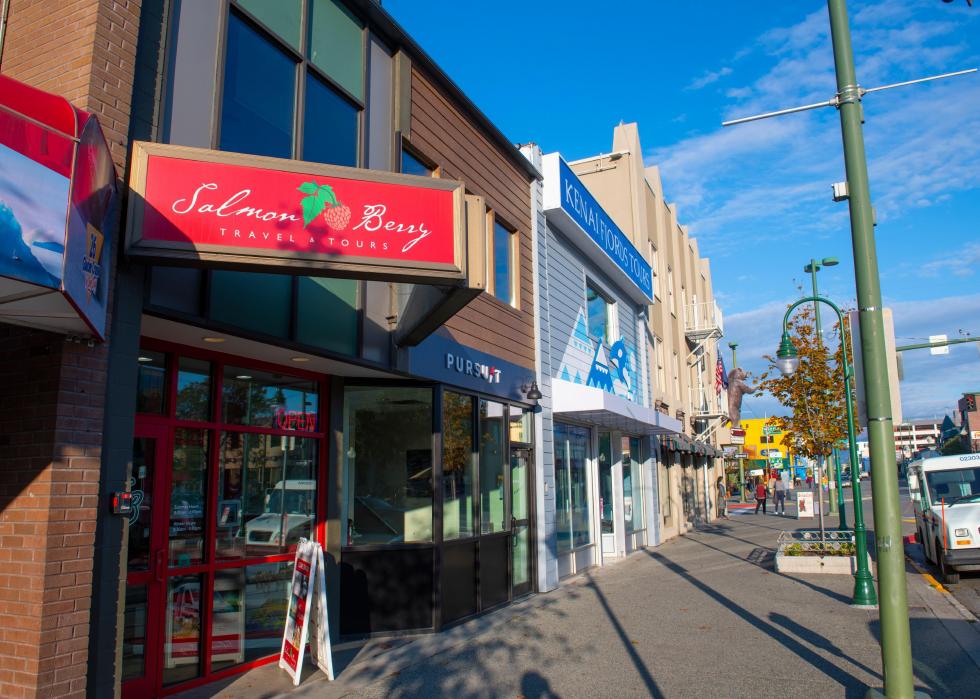
#51. Alaska
- Change in weekly business foot traffic: -50.3%
- Change by industry:
--- Full-service restaurants: -65.7%
--- Limited-service restaurants: -32.6%
--- Fitness and recreational sports centers: -75.5%
--- Department stores: -30.7%
Alaska has suffered the least in terms of lost foot traffic to its businesses and is among the first to reopen. Gov. Mike Dunleavy cited the state’s relatively low infection rate and capacity of hospitals in his decision to allow tattoo parlors, salons, and restaurants to reopen on April 24 despite virtually nonexistent testing.
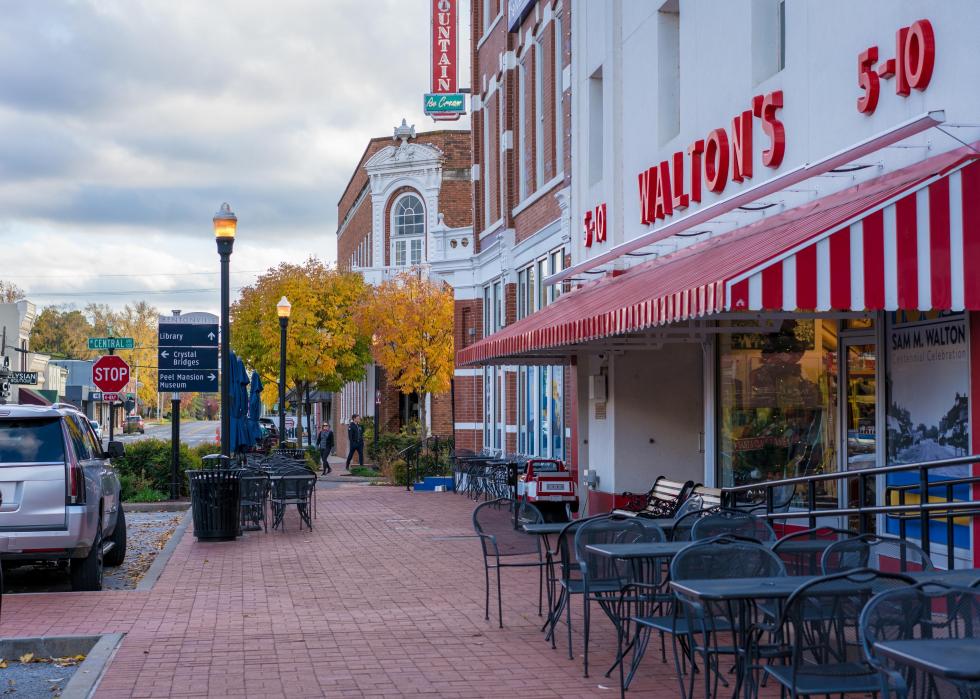
#50. Arkansas
- Change in weekly business foot traffic: -50.8%
- Change by industry:
--- Full-service restaurants: -68.4%
--- Limited-service restaurants: -31.9%
--- Fitness and recreational sports centers: -77.4%
--- Department stores: -71.5%
Arkansas recently slated $1 million for small business relief after the original $5 million fund ran out. Roughly 170,000 people have filed for unemployment in the state as of April 24, where prisoners account for the bulk of new confirmed infections.
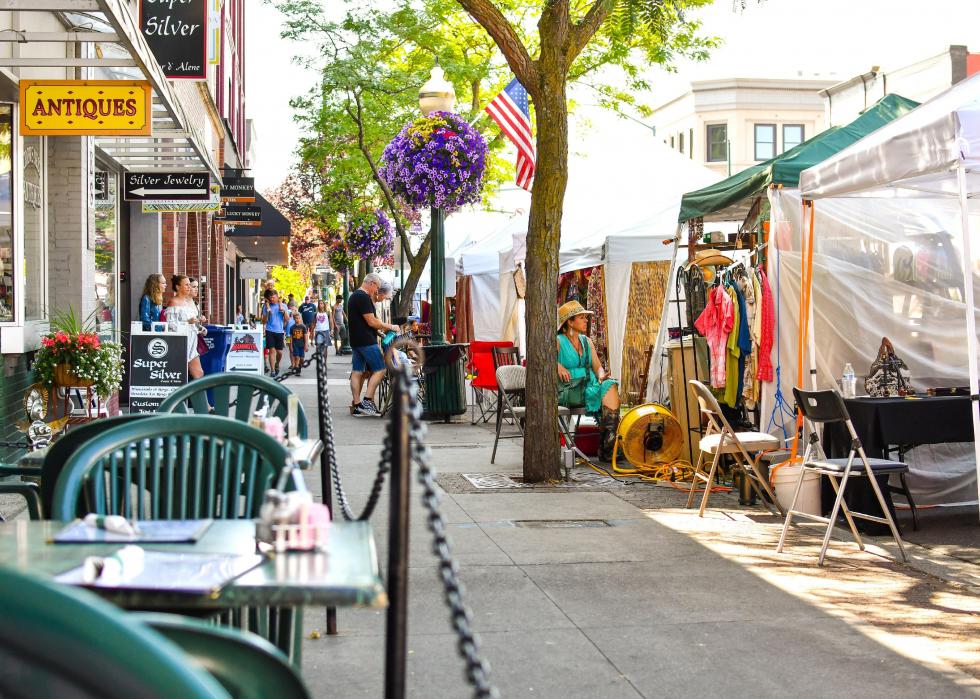
#49. Idaho
- Change in weekly business foot traffic: -51.9%
- Change by industry:
--- Full-service restaurants: -69.7%
--- Limited-service restaurants: -34.3%
--- Fitness and recreational sports centers: -75.8%
--- Department stores: -59.1%
The air travel industry has been hit especially hard in Idaho, where jobs are disappearing at a record rate. Jobless claims spiked 143% from the last week of March through the first week of April.
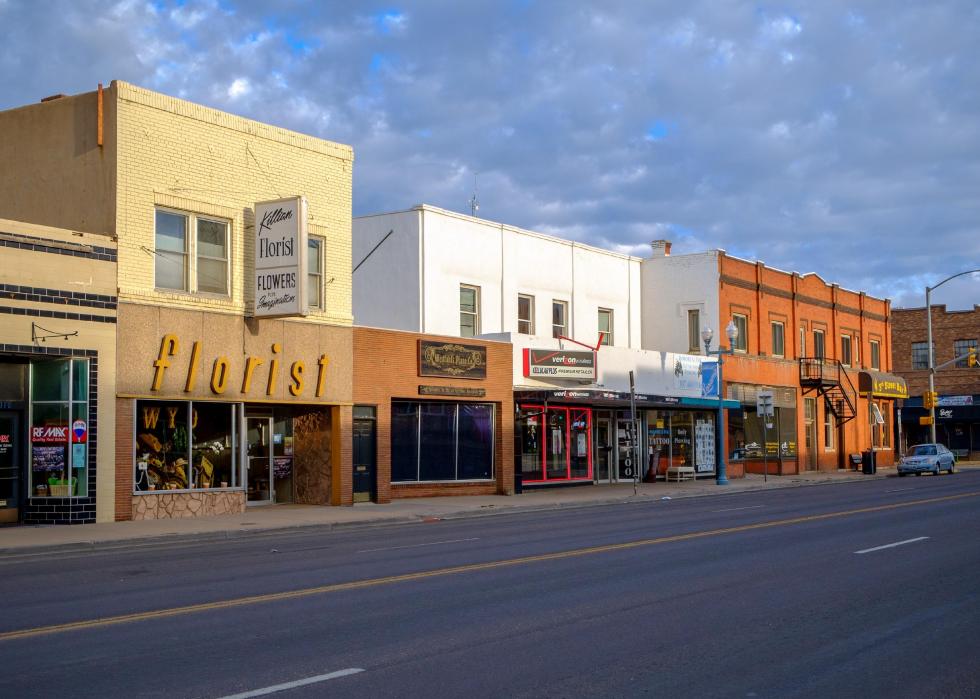
#48. Wyoming
- Change in weekly business foot traffic: -52.0%
- Change by industry:
--- Full-service restaurants: -66.6%
--- Limited-service restaurants: -39.0%
--- Fitness and recreational sports centers: -76.3%
--- Department stores: -63.0%
In Wyoming, the sector that’s suffering the most doesn’t get a lot of foot traffic—but its decline is certainly affecting businesses of all stripes in the state. The energy industry is buckling from the one-two punch of coronavirus and cratering oil prices. The massive oil, coal, and natural gas sector has propped up Wyoming’s economy and shepherded it through times of crisis in the past, but now, all three segments of the industry are suffering at once.
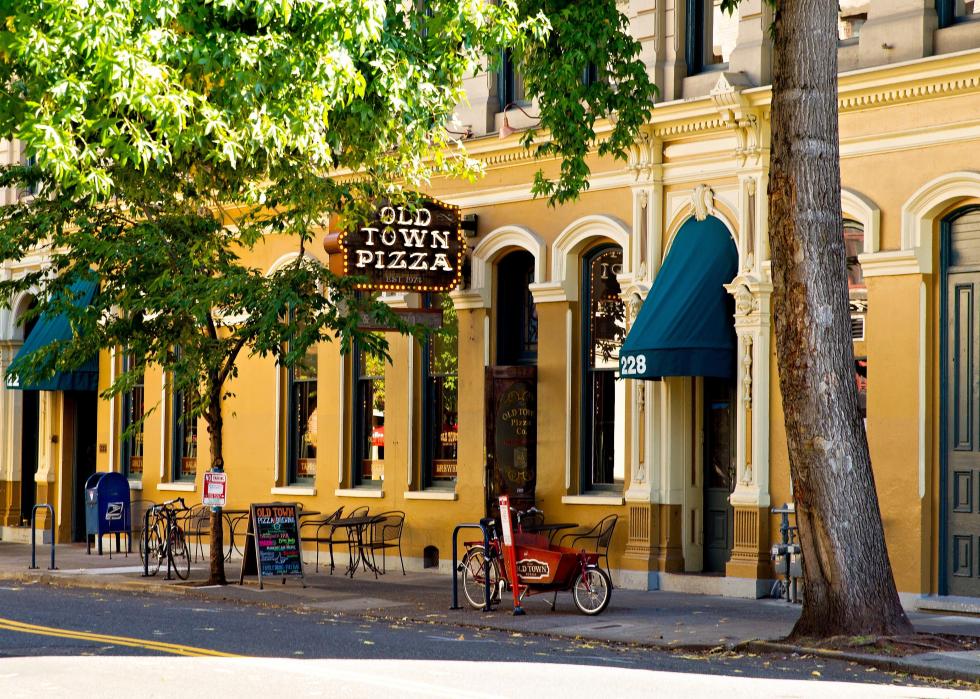
#47. Oregon
- Change in weekly business foot traffic: -53.0%
- Change by industry:
--- Full-service restaurants: -66.3%
--- Limited-service restaurants: -37.4%
--- Fitness and recreational sports centers: -75.6%
--- Department stores: -45.8%
Like the rest of the country, Oregon is experiencing record-high unemployment claims. The hardest-hit industry, not surprisingly, has been leisure and hospitality. The accommodation and food services industry went from a trickle of unemployment claims on March 14 to nearly 15,000 two weeks later.

#46. Utah
- Change in weekly business foot traffic: -53.3%
- Change by industry:
--- Full-service restaurants: -64.0%
--- Limited-service restaurants: -37.0%
--- Fitness and recreational sports centers: -73.5%
--- Department stores: -66.6%
The food services industry has been hit particularly hard in Utah’s economy in terms of unemployment claims. After that, it’s office and administrative support, sales, management occupations, and personal care services. As of the four-week period ending April 16, about eight jobless claims out of 10 had come from Salt Lake, Utah, Weber, Davis, and Washington counties.
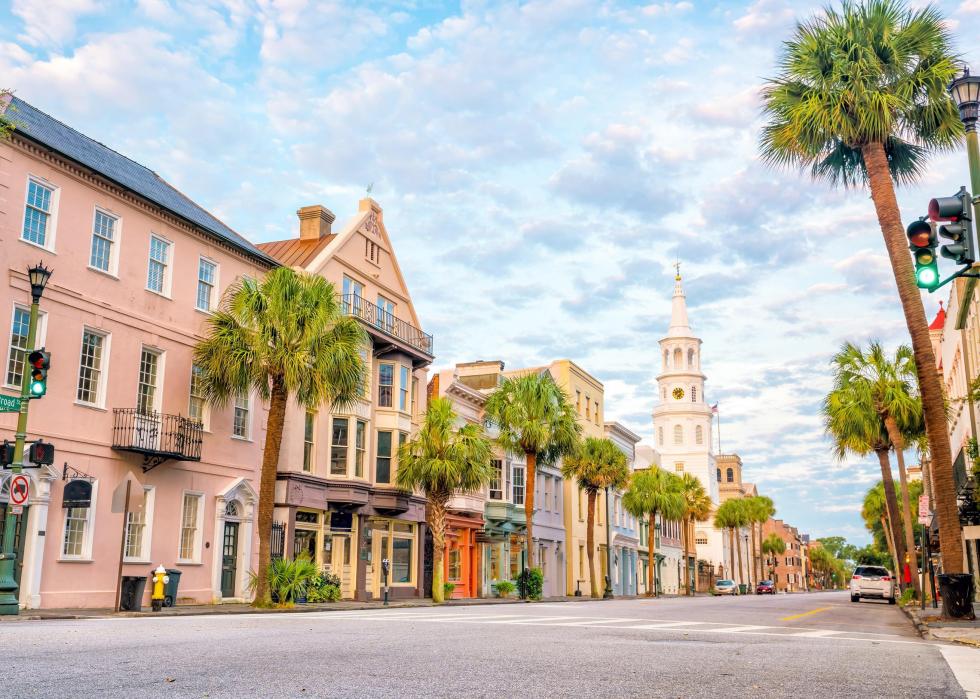
#45. South Carolina
- Change in weekly business foot traffic: -53.7%
- Change by industry:
--- Full-service restaurants: -69.8%
--- Limited-service restaurants: -38.3%
--- Fitness and recreational sports centers: -77.1%
--- Department stores: -68.8%
South Carolina’s sprawling auto industry is at the epicenter of the state’s coronavirus maelstrom. Brands like Volvo, BMW, and Mercedes all have a major presence, and with demand and sales in free-fall, shockwaves are rippling throughout the sector to suppliers, distributors, and administrative support businesses. Automotive suppliers alone had laid off nearly 5,000 people in a month as of early April.
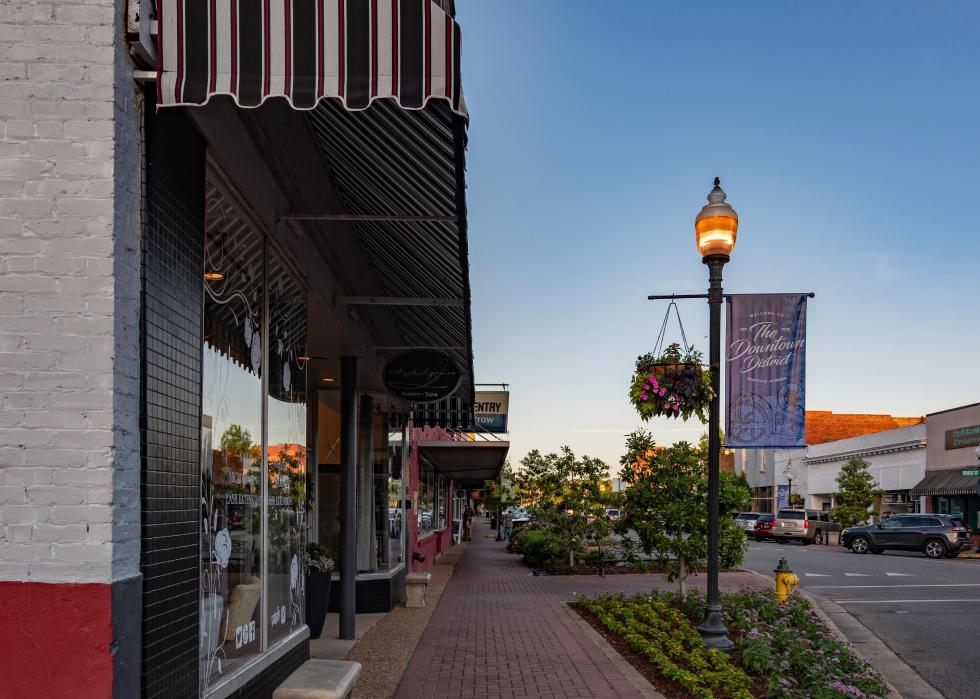
#44. Alabama
- Change in weekly business foot traffic: -54.5%
- Change by industry:
--- Full-service restaurants: -65.9%
--- Limited-service restaurants: -39.2%
--- Fitness and recreational sports centers: -79.8%
--- Department stores: -66.6%
Alabama is emerging as a southern coronavirus hotspot, and few places stand to lose more than the state’s biggest city, Birmingham. Nearly three out of four jobs in Birmingham’s seven-county metro area are based on consumption, which is at a virtual standstill. Officials estimated in the first week of April that Birmingham businesses will lose $9.2 million in 60 days.
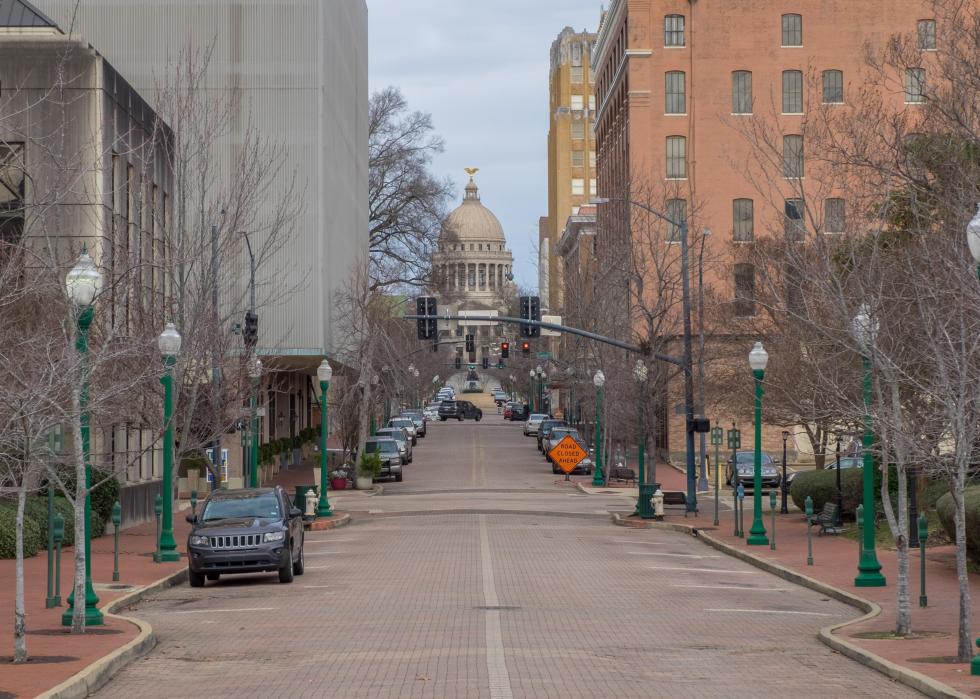
#43. Mississippi
- Change in weekly business foot traffic: -54.5%
- Change by industry:
--- Full-service restaurants: -69.7%
--- Limited-service restaurants: -38.9%
--- Fitness and recreational sports centers: -79.3%
--- Department stores: -76.9%
Mississippi has experienced a whopping 9,000% increase in unemployment claims since the crisis began. Rural Mississippi is vulnerable to a disproportionately severe and long-lasting impact from this crisis just as it experienced in the 2008 recession. Statewide, Mississippi is expected to lose $6.6 billion this year—that’s about 6% of the state’s entire GDP.
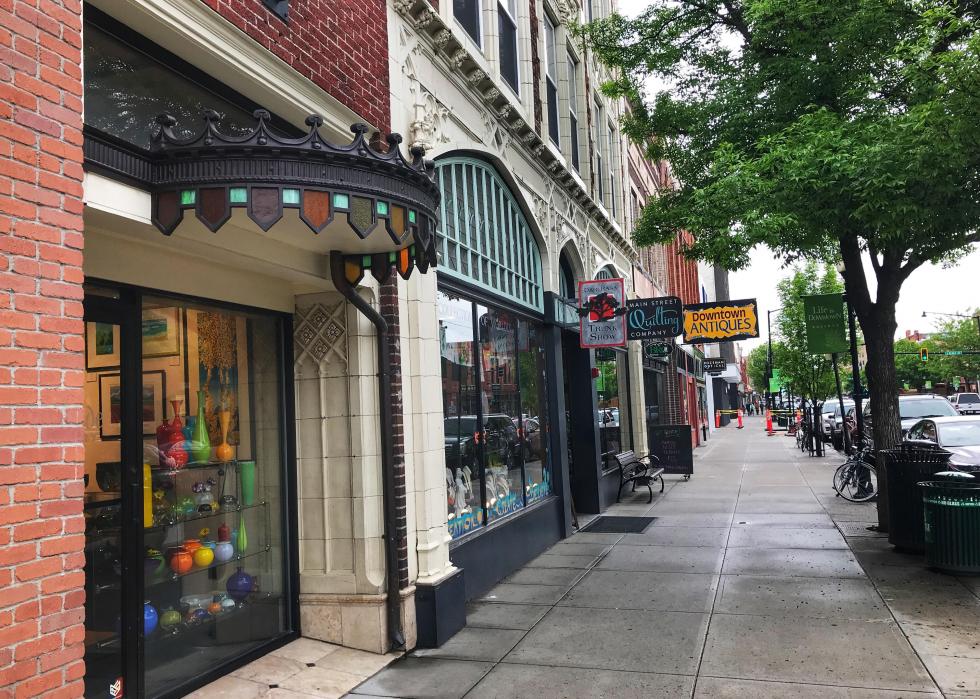
#42. Montana
- Change in weekly business foot traffic: -54.8%
- Change by industry:
--- Full-service restaurants: -70.2%
--- Limited-service restaurants: -39.8%
--- Fitness and recreational sports centers: -77.3%
--- Department stores: -62.4%
Montana's hotel industry—which supports 38,443 jobs both directly and indirectly—is suffering a debilitating crisis with some hotel bookings dropping by as much as 60% before March had even ended. The already-struggling cattle industry is also taking what might be an unsurvivable hit. Slaughter cattle prices dropped from $1 per pound to 62 cents and live cattle futures dropped more than 20% as early as March 19.
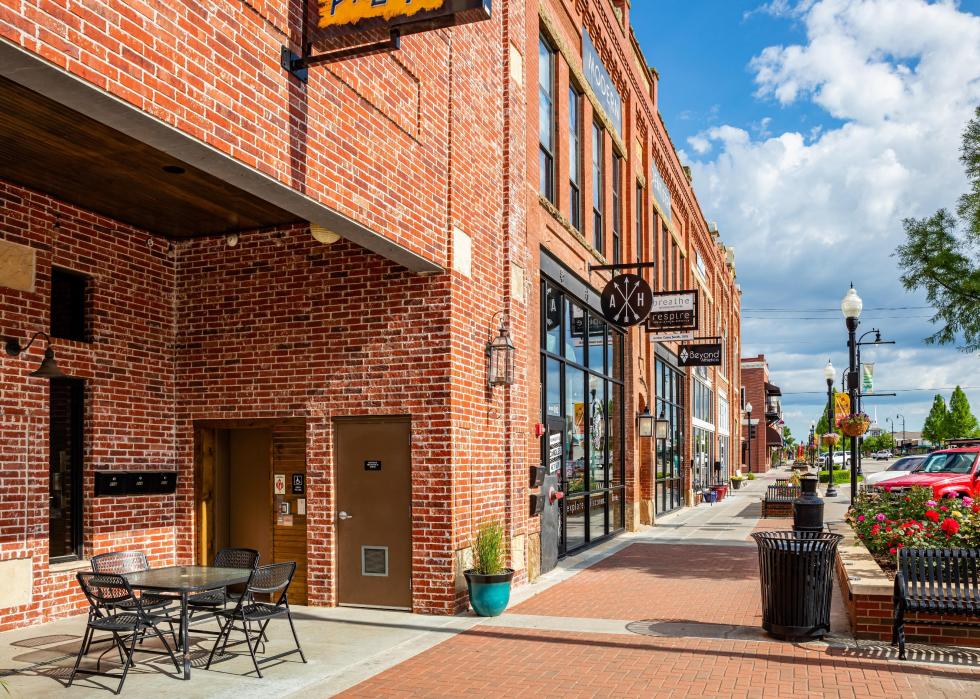
#41. Oklahoma
- Change in weekly business foot traffic: -54.9%
- Change by industry:
--- Full-service restaurants: -70.4%
--- Limited-service restaurants: -38.0%
--- Fitness and recreational sports centers: -80.6%
--- Department stores: -71.4%
The Oklahoma City metro region has been hit especially hard, with 88% of businesses reporting as of April 3 they’d already lost, or were bracing to lose, money. About half were already applying for emergency loans by that time as average revenues had declined by nearly 45%.
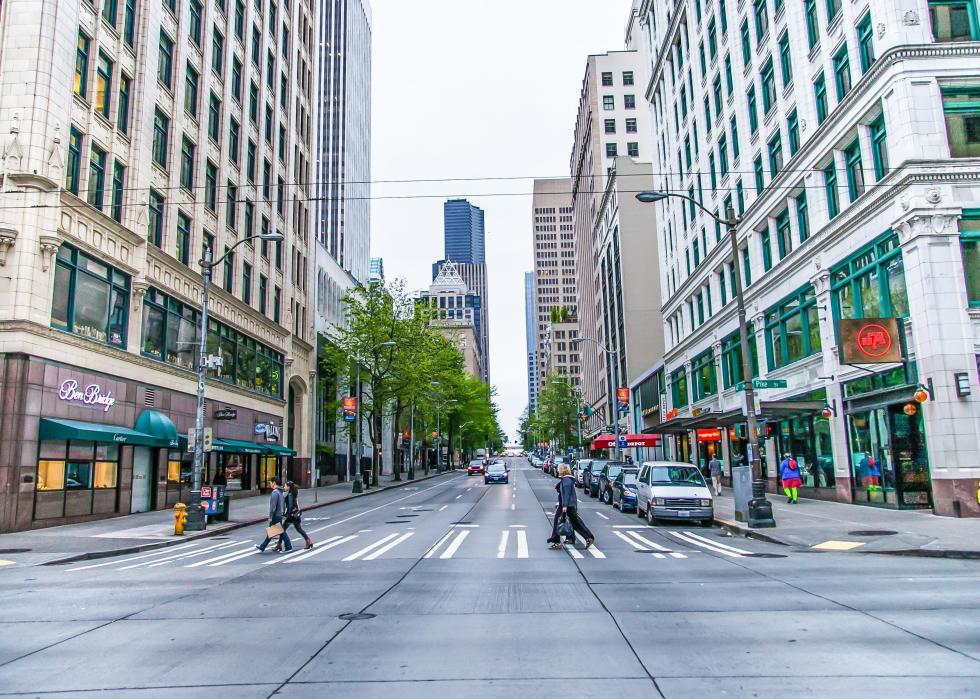
#40. Washington
- Change in weekly business foot traffic: -55.6%
- Change by industry:
--- Full-service restaurants: -66.6%
--- Limited-service restaurants: -40.6%
--- Fitness and recreational sports centers: -76.2%
--- Department stores: -59.2%
The Seattle area took the brunt of the state’s impact from the coronavirus. Accommodation and food-service companies have been hit especially hard, with workers from that industry making up roughly one in four unemployment claims as of late March, and much of the damage centered on hard-hit King County.
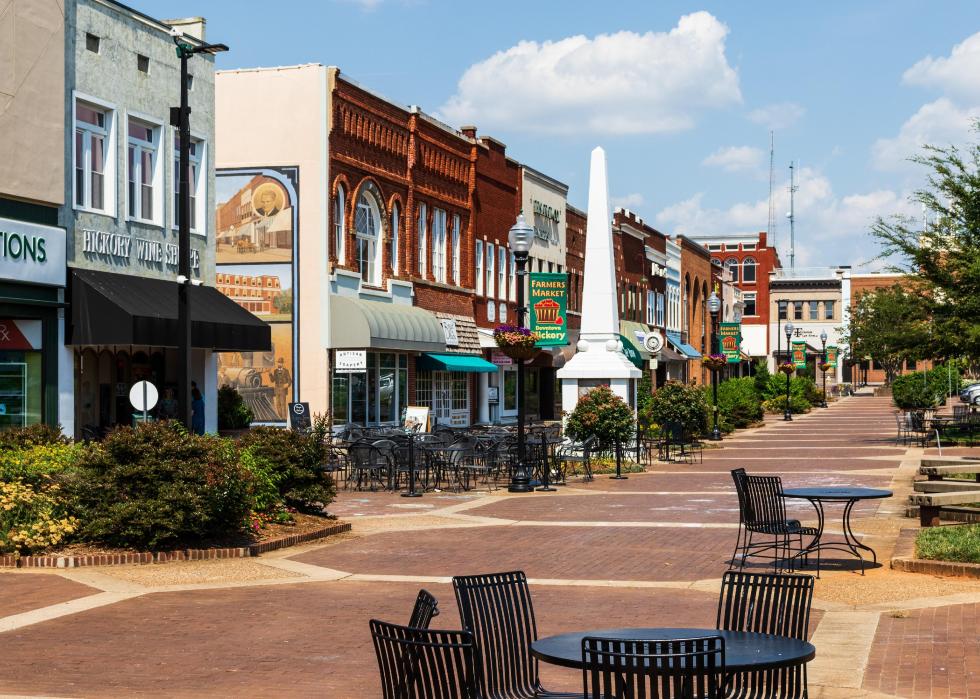
#39. North Carolina
- Change in weekly business foot traffic: -55.8%
- Change by industry:
--- Full-service restaurants: -66.8%
--- Limited-service restaurants: -42.5%
--- Fitness and recreational sports centers: -77.9%
--- Department stores: -69.1%
Job losses in North Carolina have been among the worst in the nation from early in the crisis. Thanks to its massive tech industry, the Durham-Chapel Hill region has been relatively well insulated, but in the state as a whole, unemployment increased by as much as 6,000% over the previous year, as of April.
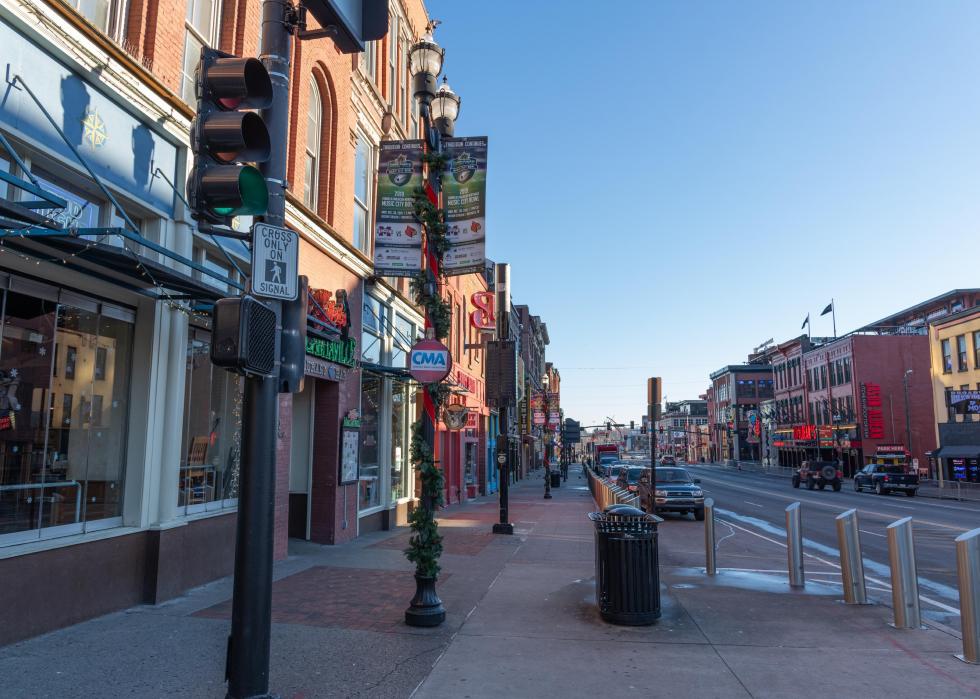
#38. Tennessee
- Change in weekly business foot traffic: -56.4%
- Change by industry:
--- Full-service restaurants: -71.3%
--- Limited-service restaurants: -39.2%
--- Fitness and recreational sports centers: -80.2%
--- Department stores: -71.1%
By the end of March, it was clear that the 13 counties in the Northern Middle Tennessee region suffered the worst of the virus-imposed economic shutdown. More than 43% of the state’s total jobless claims came from that region.
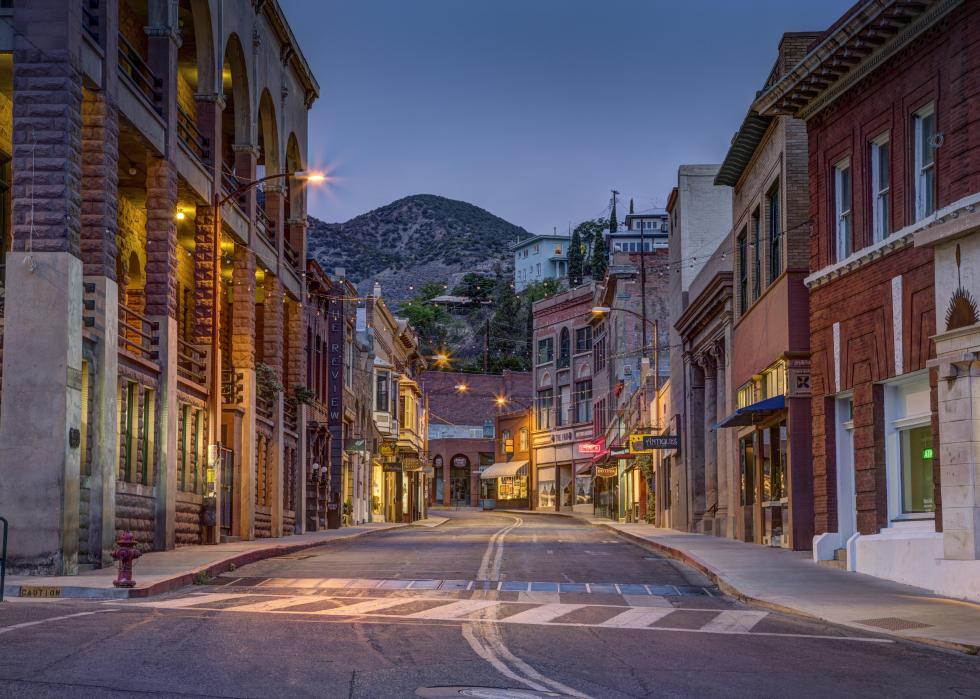
#37. Arizona
- Change in weekly business foot traffic: -56.7%
- Change by industry:
--- Full-service restaurants: -70.5%
--- Limited-service restaurants: -43.5%
--- Fitness and recreational sports centers: -77.4%
--- Department stores: -65.7%
Native American tribes and their businesses in Arizona have been impacted greatly by the economic consequences of the shutdown. To make matters worse, they've collectively had a much harder time securing relief from the federal government, as they face more red tape than the larger population in securing stimulus money and emergency loans.
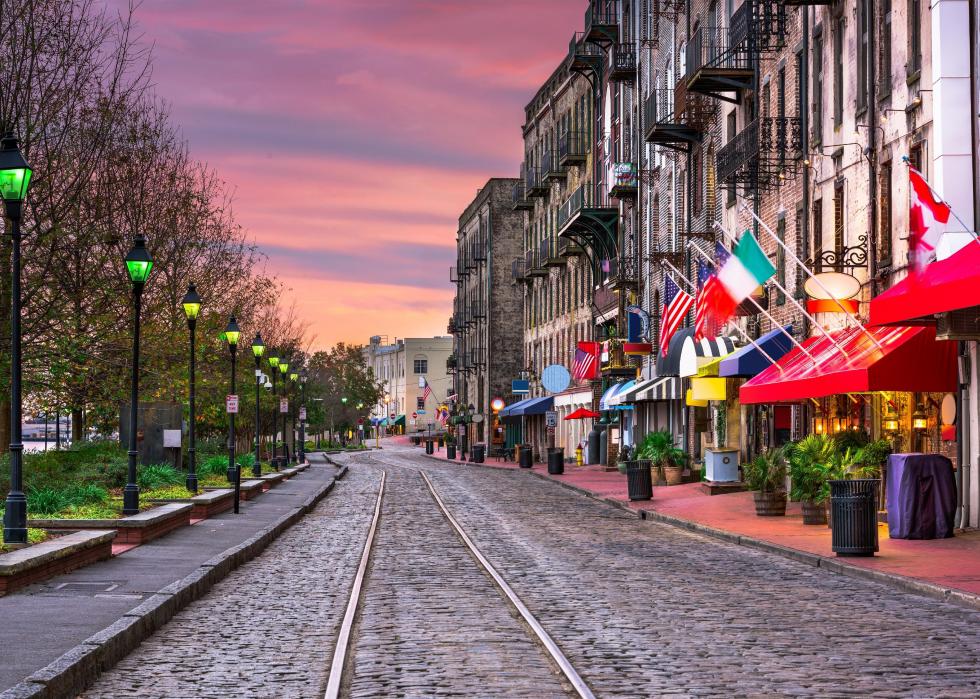
#36. Georgia
- Change in weekly business foot traffic: -57.0%
- Change by industry:
--- Full-service restaurants: -69.8%
--- Limited-service restaurants: -41.3%
--- Fitness and recreational sports centers: -78.4%
--- Department stores: -71.3%
The tourism industry, and the vibrant nightlife scene it fuels, has taken the brunt of the downturn in Georgia, with popular vacation spots like Savannah having an especially hard time. The state made news as being among the first in the nation to begin reopening even though its cases of infection were increasing.
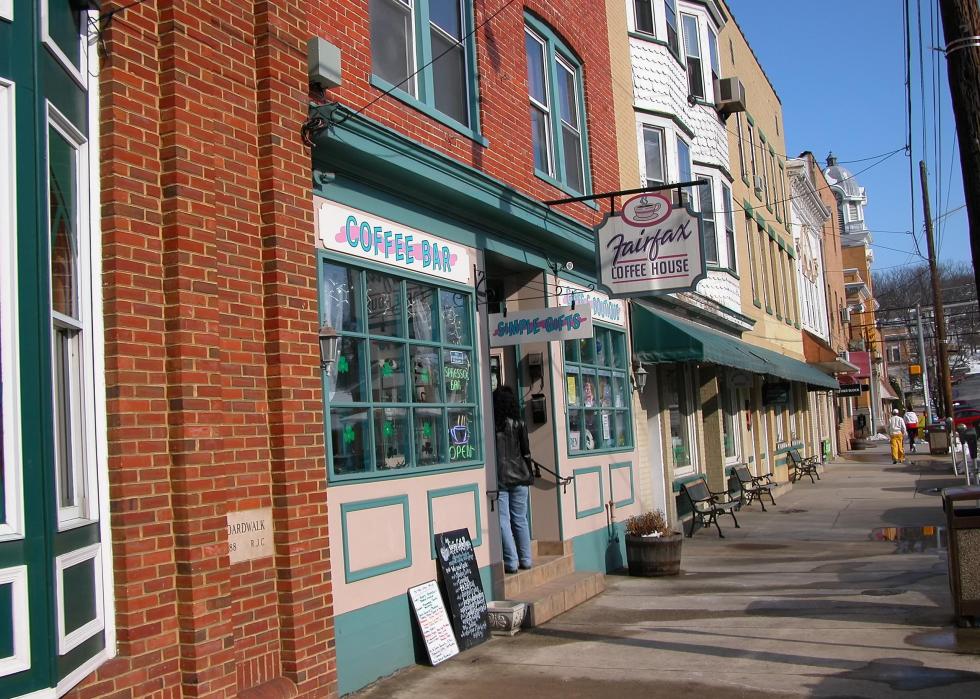
#35. West Virginia
- Change in weekly business foot traffic: -57.1%
- Change by industry:
--- Full-service restaurants: -72.5%
--- Limited-service restaurants: -44.5%
--- Fitness and recreational sports centers: -76.7%
--- Department stores: -75.3%
West Virginia is one of the states more vulnerable to economic devastation from the virus shutdown. Not only does the state rely heavily on tourism—which is at a standstill—but it's also dependent on energy, an industry in free-fall. Other factors, like a lack of widespread broadband, insufficient medical infrastructure, and the fact that a disproportionate number of residents have jobs that aren’t compatible with telecommuting are worsening the crisis there.
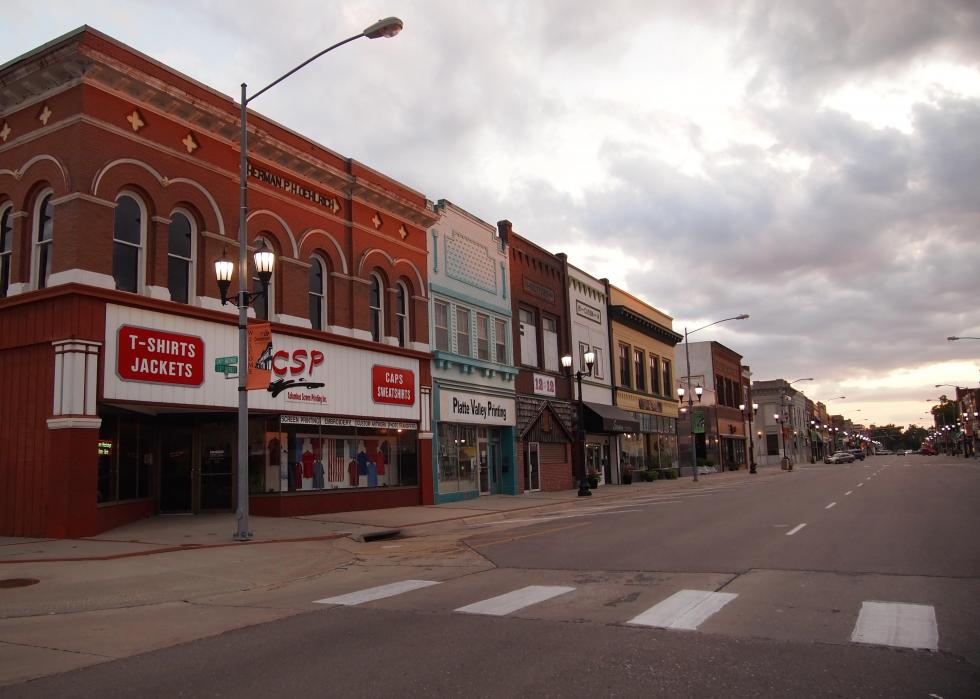
#34. Nebraska
- Change in weekly business foot traffic: -57.7%
- Change by industry:
--- Full-service restaurants: -69.1%
--- Limited-service restaurants: -44.8%
--- Fitness and recreational sports centers: -78.1%
--- Department stores: -57.4%
The oil crisis and the coronavirus have devastated the ethanol industry—and Nebraska is the #2 state in terms of production. Since the state is home to a relatively small share of sectors significantly impacted by the virus, it is expected to emerge as one of the most resilient.
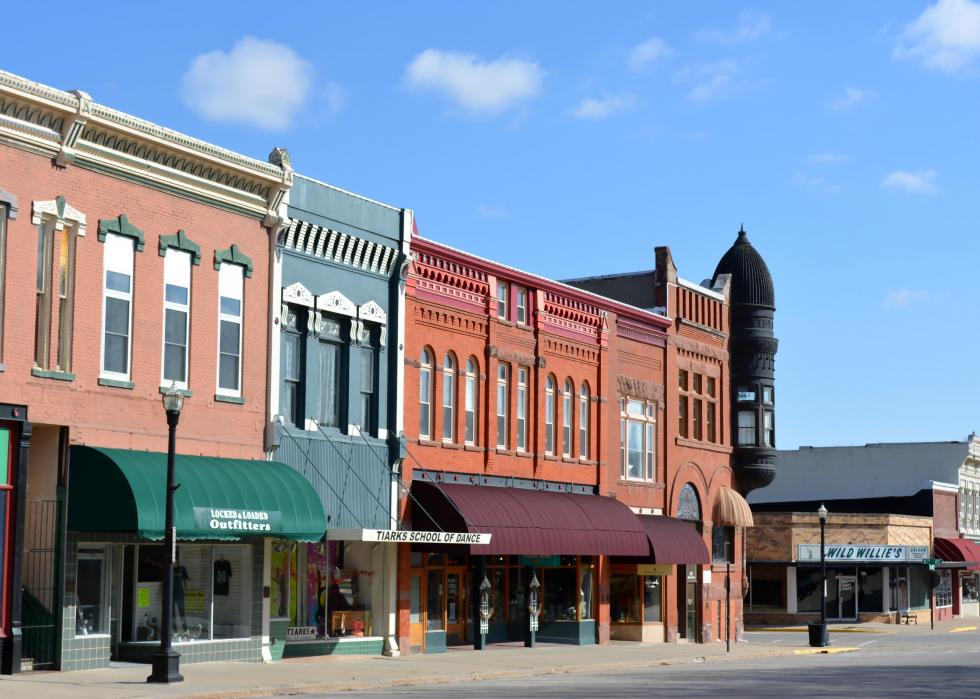
#33. Iowa
- Change in weekly business foot traffic: -57.8%
- Change by industry:
--- Full-service restaurants: -70.6%
--- Limited-service restaurants: -43.5%
--- Fitness and recreational sports centers: -80.7%
--- Department stores: -59.6%
Rural Iowa was already struggling with the fallout of a trade war that forced a reduction in the price of commodities like corn, soybeans, pork, and beef, with many farmers relying on government aid even before the virus. Meanwhile, the state’s more heavily populated metro regions are suffering from the same drop-off in business foot traffic as the rest of the country.
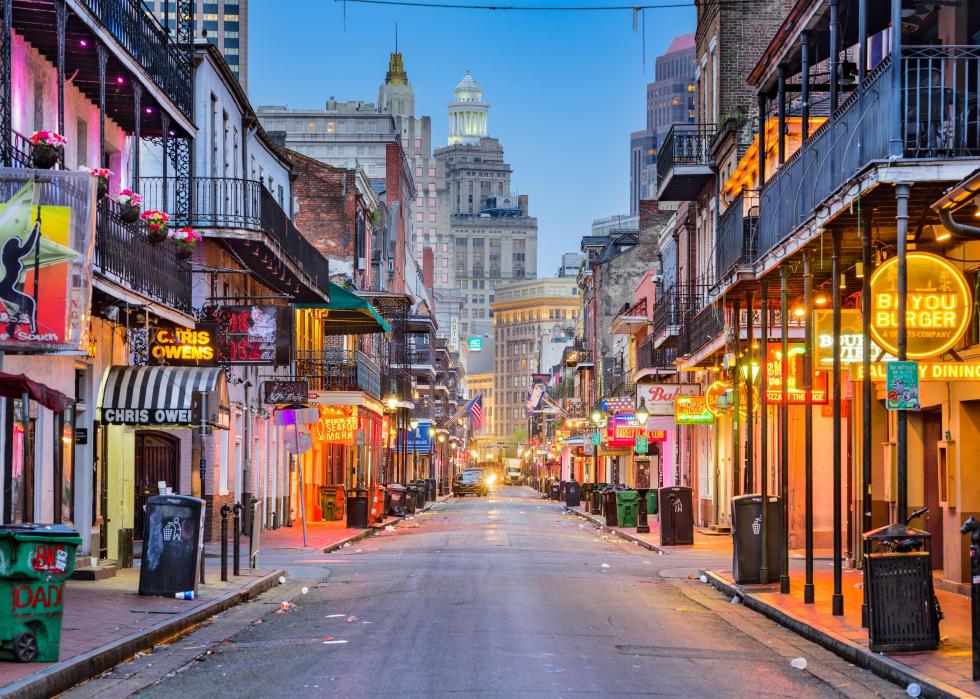
#32. Louisiana
- Change in weekly business foot traffic: -57.8%
- Change by industry:
--- Full-service restaurants: -70.8%
--- Limited-service restaurants: -44.1%
--- Fitness and recreational sports centers: -80.3%
--- Department stores: -70.5%
Louisiana is a major virus epicenter in the South, and the shutdown has crippled its tourism, gambling, restaurant, and nightlife/entertainment sectors. In hard-hit Baton Rouge, hundreds of businesses have closed, thousands of workers—mostly wage earners—are now unemployed, and the entire Capital Region is virtually void of foot traffic to all but the most essential businesses.
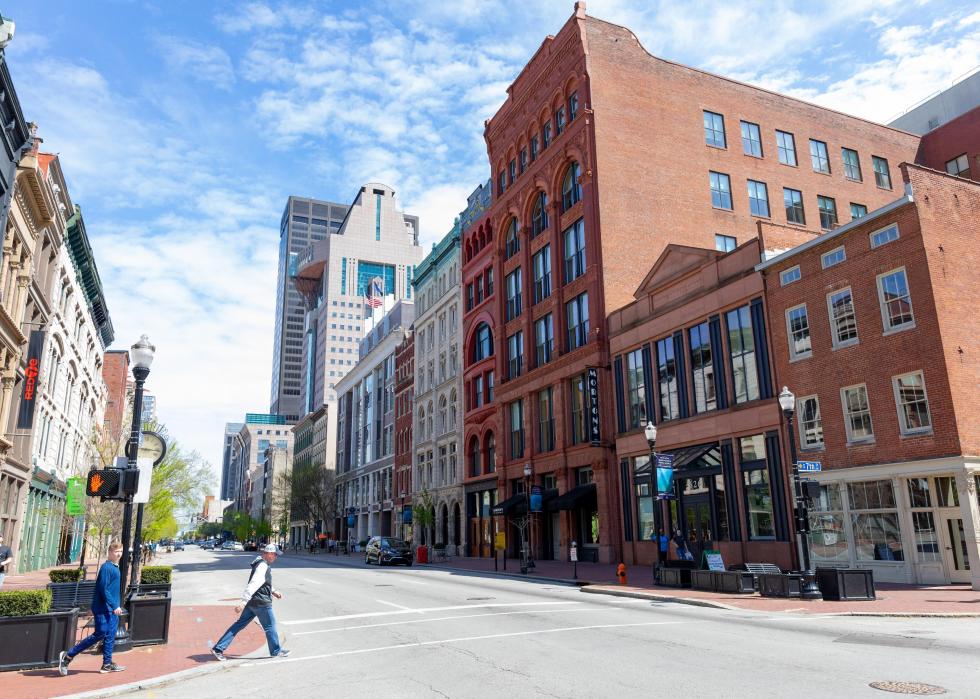
#31. Kentucky
- Change in weekly business foot traffic: -58.3%
- Change by industry:
--- Full-service restaurants: -72.3%
--- Limited-service restaurants: -43.0%
--- Fitness and recreational sports centers: -80.1%
--- Department stores: -75.4%
Jefferson County is at the heart of the crisis in Kentucky—Louisville, especially. As of April 23, more than 25% of the reported cases and more than 40% of deaths were in Jefferson. It also stands to suffer harder and longer than other regions in the state because officials are not considering opening the county’s non-essential businesses like other less-affected regions of Kentucky.
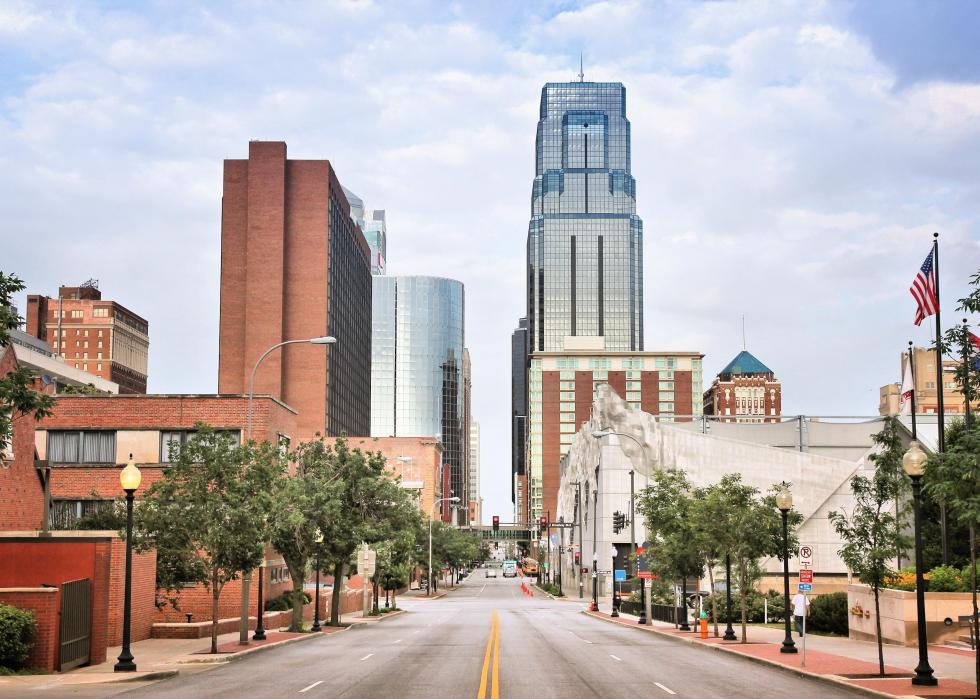
#30. Missouri
- Change in weekly business foot traffic: -58.4%
- Change by industry:
--- Full-service restaurants: -71.0%
--- Limited-service restaurants: -41.9%
--- Fitness and recreational sports centers: -81.5%
--- Department stores: -70.1%
Missouri’s governor announced plans to reopen much of the state by May 4. The state ranks in the top 10 among those whose small businesses have been least affected by the economic shutdown.
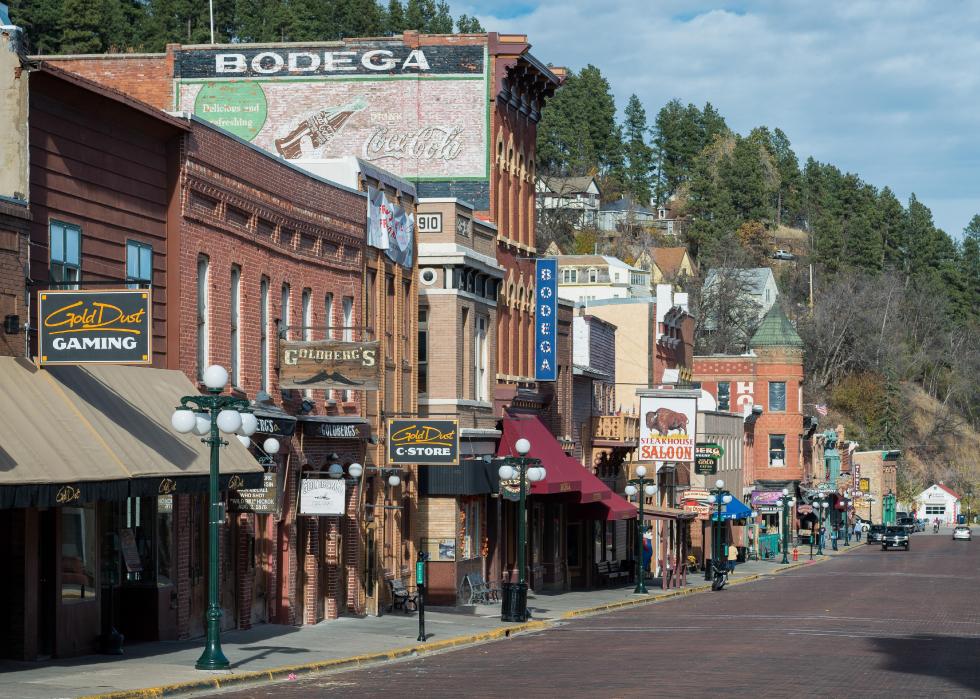
#29. South Dakota
- Change in weekly business foot traffic: -58.7%
- Change by industry:
--- Full-service restaurants: -70.1%
--- Limited-service restaurants: -51.4%
--- Fitness and recreational sports centers: -73.9%
--- Department stores: -68.4%
South Dakota is one of only a handful of states whose governor never issued stay-at-home orders. Even so, it stands out as being the state with the smallest percentage of the workforce filing jobless claims in the entire country.
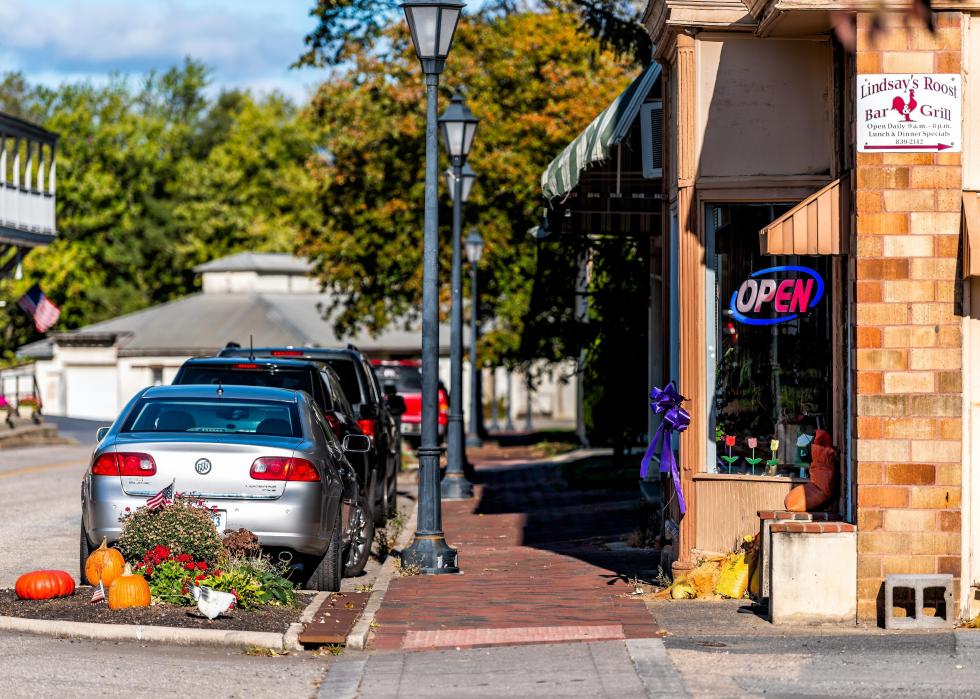
#28. Virginia
- Change in weekly business foot traffic: -58.8%
- Change by industry:
--- Full-service restaurants: -71.6%
--- Limited-service restaurants: -48.1%
--- Fitness and recreational sports centers: -77.8%
--- Department stores: -68.3%
With nearly half a million Virginians filing for unemployment in a single month, no industry in the state has been spared and officials expect a full rebound to take years. No industry, however, has suffered more than restaurants. In just one month, nearly a quarter-million restaurant workers—237,000 in total—lost their jobs.

#27. Texas
- Change in weekly business foot traffic: -59.1%
- Change by industry:
--- Full-service restaurants: -70.0%
--- Limited-service restaurants: -45.2%
--- Fitness and recreational sports centers: -80.9%
--- Department stores: -72.3%
As is the case in so many other states, Texas' services industry is in free-fall as restaurants, hotels, and retail shops remain closed with zero foot traffic. A major energy state, Texas is also suffering from a global drop in oil prices.

#26. New Mexico
- Change in weekly business foot traffic: -59.1%
- Change by industry:
--- Full-service restaurants: -72.9%
--- Limited-service restaurants: -44.9%
--- Fitness and recreational sports centers: -76.7%
--- Department stores: -63.4%
Despite being one of the poorest states in the country, New Mexico has one of the lowest coronavirus infection rates in the country thanks to early shutdown actions. One of the costs, however, is its tourism industry—now in tatters along with the state’s coal industry, which was already teetering before the crisis and has now been crushed by a dramatic reduction in energy demand.
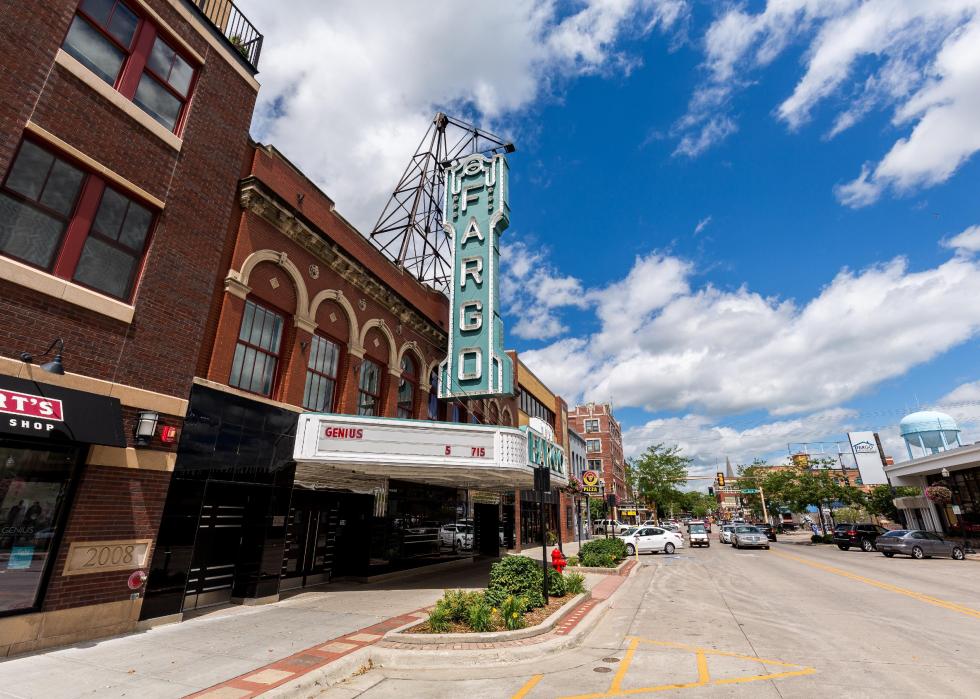
#25. North Dakota
- Change in weekly business foot traffic: -59.4%
- Change by industry:
--- Full-service restaurants: -72.2%
--- Limited-service restaurants: -42.6%
--- Fitness and recreational sports centers: -79.8%
--- Department stores: -75.6%
Oil is the most important industry in North Dakota and the sector—as well as the massive tax revenue it generates and jobs it produces—is suffering a terrible downturn. As of April 21, nearly one in three wells had been idled and production had declined by over 20%.
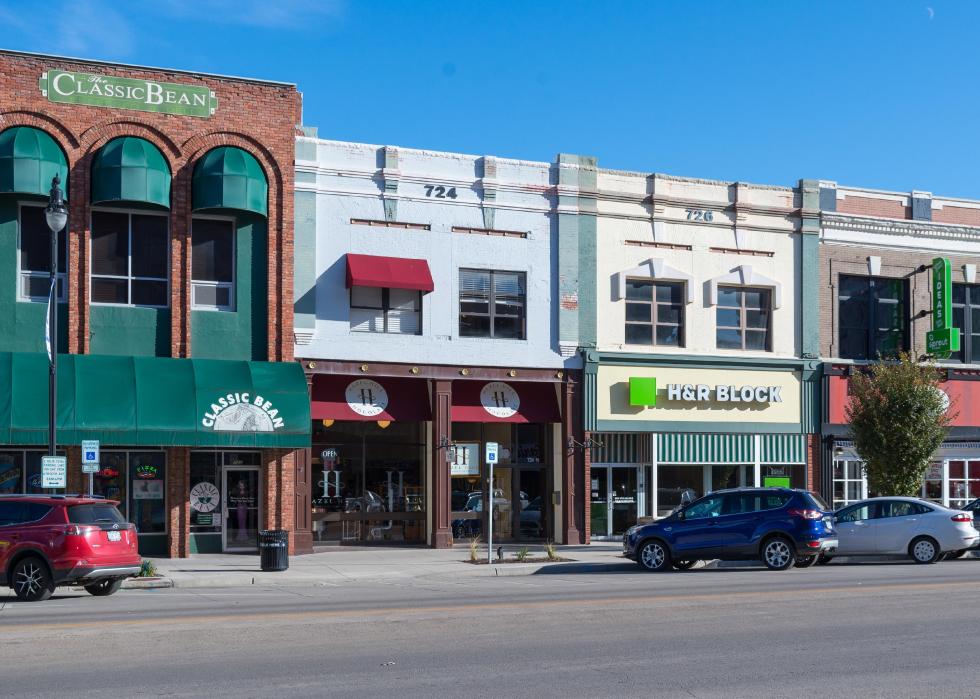
#24. Kansas
- Change in weekly business foot traffic: -59.4%
- Change by industry:
--- Full-service restaurants: -73.3%
--- Limited-service restaurants: -42.8%
--- Fitness and recreational sports centers: -83.4%
--- Department stores: -72.2%
Like much of rural America, Kansas has not yet felt the full brunt of the economic shutdown’s impact, but the picture is starting to come into focus. The state expects its businesses to lose $1.3 billion in revenue in the coming year, and the state’s massive animal agriculture industry—concentrated in four counties—is among Kansas’ hardest-hit sectors now that widespread virus outbreaks are shutting down meatpacking plants nationwide.
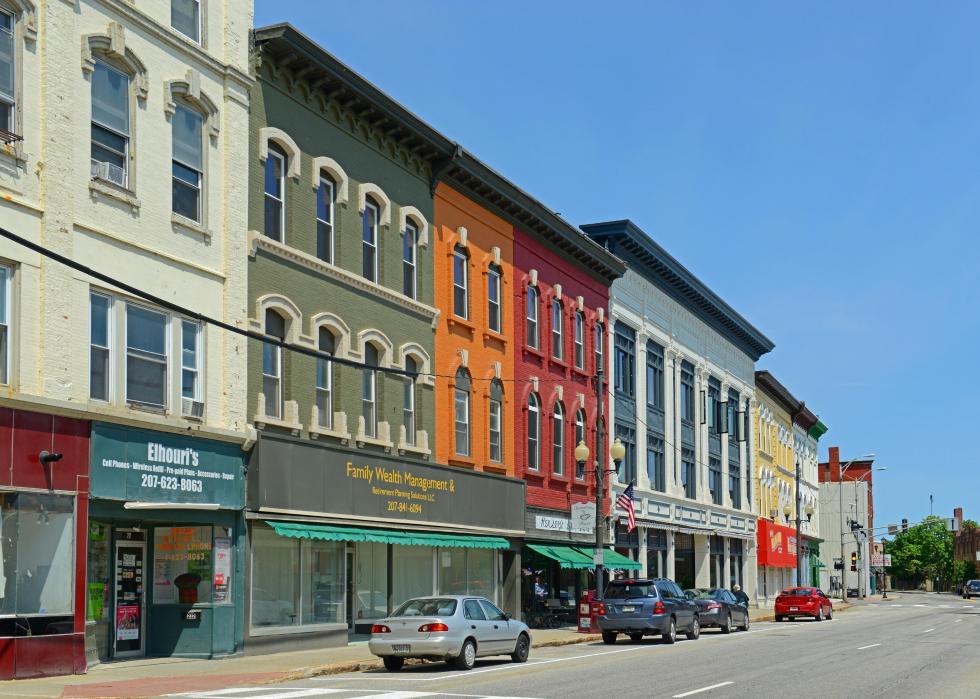
#23. Maine
- Change in weekly business foot traffic: -59.8%
- Change by industry:
--- Full-service restaurants: -68.0%
--- Limited-service restaurants: -45.0%
--- Fitness and recreational sports centers: -77.1%
--- Department stores: -77.1%
Maine is at or near the top of the list in terms of states whose businesses are most vulnerable to the economic fallout from the shutdown. Small businesses and the self-employed dominate the economic landscape while the state’s population is the oldest in America—and the elderly are more susceptible to serious infections.
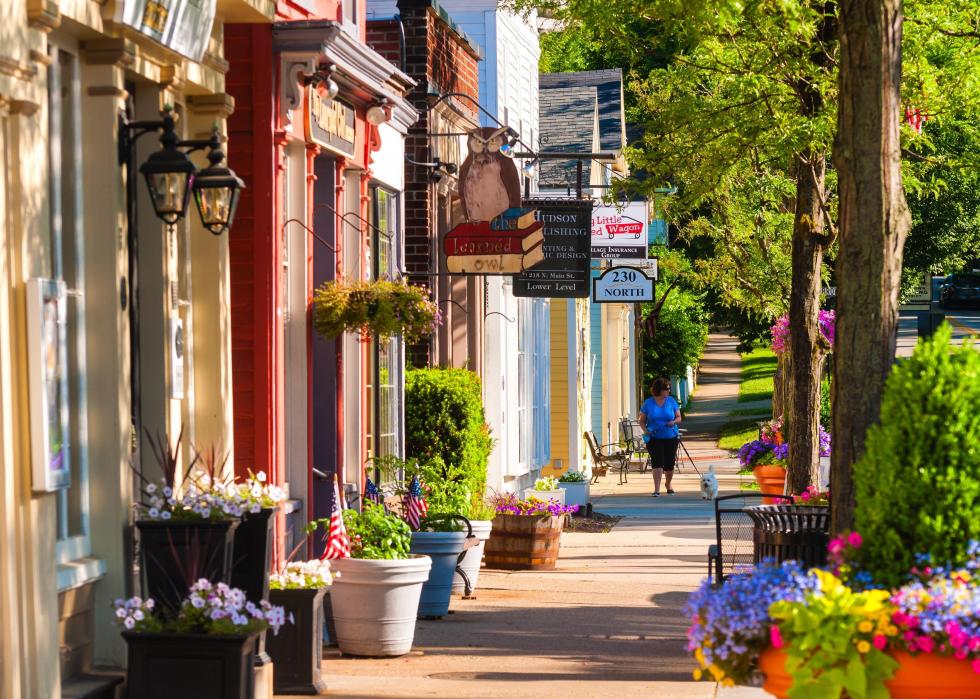
#22. Ohio
- Change in weekly business foot traffic: -60.8%
- Change by industry:
--- Full-service restaurants: -72.9%
--- Limited-service restaurants: -47.2%
--- Fitness and recreational sports centers: -83.4%
--- Department stores: -71.5%
Ohio has suffered among the highest increases in unemployment claims in America, with over a quarter-million people filing claims in just a single week at the end of March. In Preble County alone, jobless claims spiked by 5,756% in seven days.
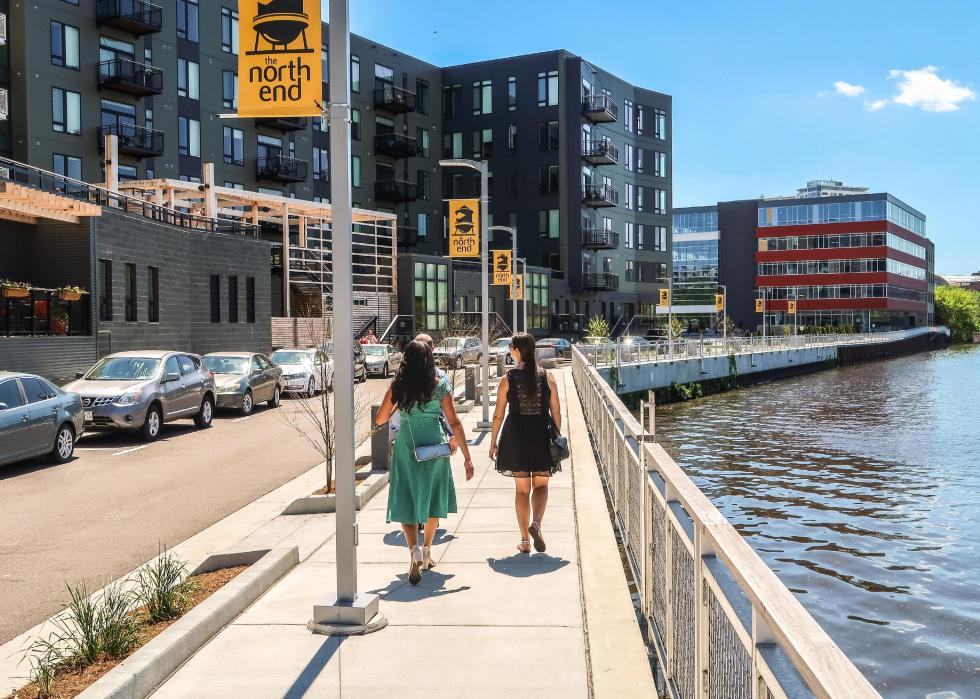
#21. Wisconsin
- Change in weekly business foot traffic: -61.1%
- Change by industry:
--- Full-service restaurants: -73.2%
--- Limited-service restaurants: -50.8%
--- Fitness and recreational sports centers: -82.0%
--- Department stores: -67.4%
The tourist hotspot of Wisconsin Dells has suffered more than almost any other part of the state as foot traffic has dried up. Small businesses in major cities like Milwaukee and Madison are struggling, too, but the state’s six tourism-dependent counties are suffering the most.

#20. Indiana
- Change in weekly business foot traffic: -61.6%
- Change by industry:
--- Full-service restaurants: -74.0%
--- Limited-service restaurants: -47.1%
--- Fitness and recreational sports centers: -84.0%
--- Department stores: -75.0%
As of April 23, more than half a million Indiana workers had filed unemployment claims, with 75,483 claims in a single week compared to 2,719 to the same week last year. Entertainment, hospitality, and restaurants have so far suffered the greatest, but white-collar jobs and positions dependent on ad revenue are expected to bear the brunt of a predicted second wave.

#19. Delaware
- Change in weekly business foot traffic: -61.9%
- Change by industry:
--- Full-service restaurants: -74.2%
--- Limited-service restaurants: -54.4%
--- Fitness and recreational sports centers: -80.9%
--- Department stores: -82.5%
Delaware is experiencing a north-south divide in how it is faring in the crisis. Sussex County in the south—with large Haitian and Hispanic populations and major poultry processing plants—is at the epicenter of the crisis despite New Castle County in the north being much more densely populated.
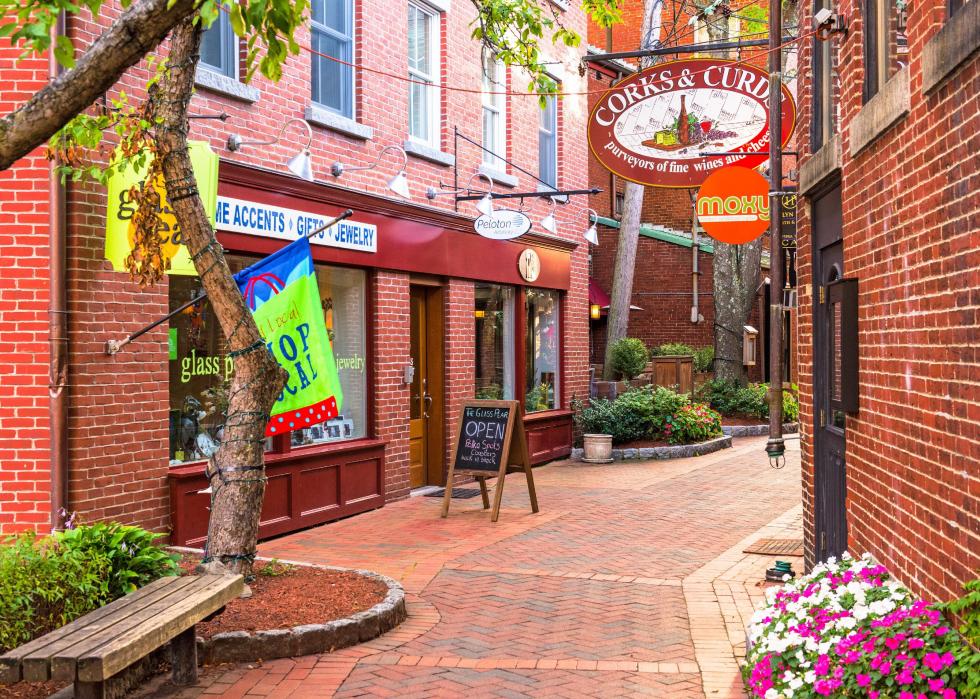
#18. New Hampshire
- Change in weekly business foot traffic: -62.1%
- Change by industry:
--- Full-service restaurants: -73.0%
--- Limited-service restaurants: -47.2%
--- Fitness and recreational sports centers: -82.9%
--- Department stores: -74.4%
Over 150,000 people have lost their jobs in New Hampshire, and some industries were hit much harder than others. 11,000 administrative and support jobs dried up, 4,600 auto, boat, and RV sales positions, 6,000 jobs in education, 6,000 dental positions, and a whopping 26,000 bar and restaurant jobs have been lost as of April 23.
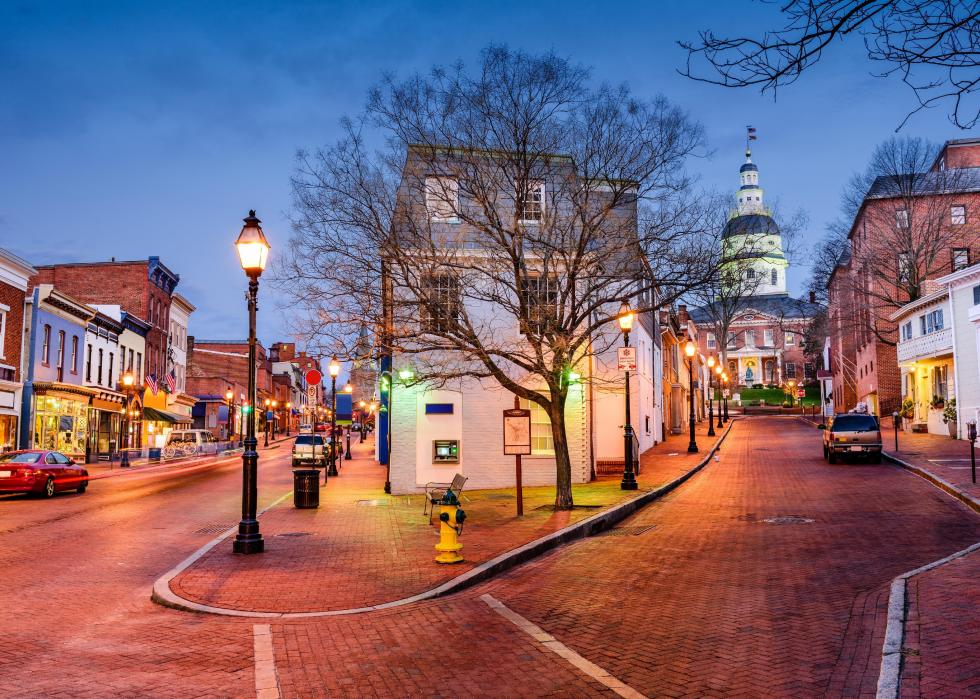
#17. Maryland
- Change in weekly business foot traffic: -62.4%
- Change by industry:
--- Full-service restaurants: -70.4%
--- Limited-service restaurants: -54.3%
--- Fitness and recreational sports centers: -82.1%
--- Department stores: -69.5%
Maryland is having an especially hard time with a steep reduction in foot traffic, largely because of the nature of its economic landscape. Unlike many states anchored by big, well-capitalized corporations, Maryland's economy consists mostly of small- and medium-sized businesses. Companies with 500 or fewer workers employ roughly nine in 10 Marylanders.
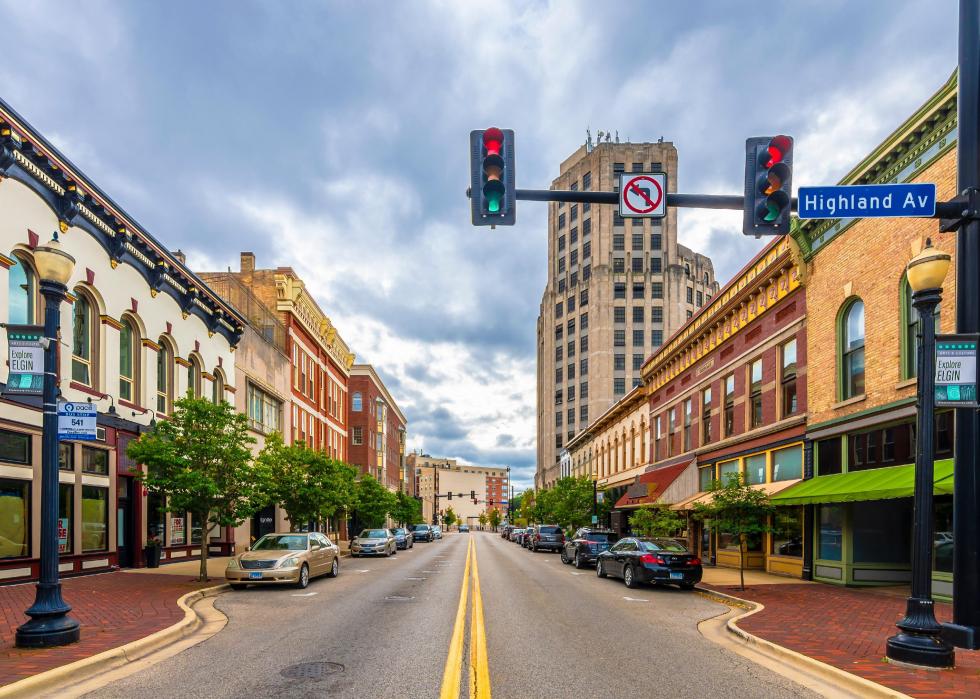
#16. Illinois
- Change in weekly business foot traffic: -63.6%
- Change by industry:
--- Full-service restaurants: -71.6%
--- Limited-service restaurants: -52.8%
--- Fitness and recreational sports centers: -84.0%
--- Department stores: -68.0%
Nearly three-quarters of a million people have filed unemployment claims in Illinois as of April 27. Chicago and Cook County are ground zero in the state, with Chicago poised to become a national hotspot for the virus’ wrath.
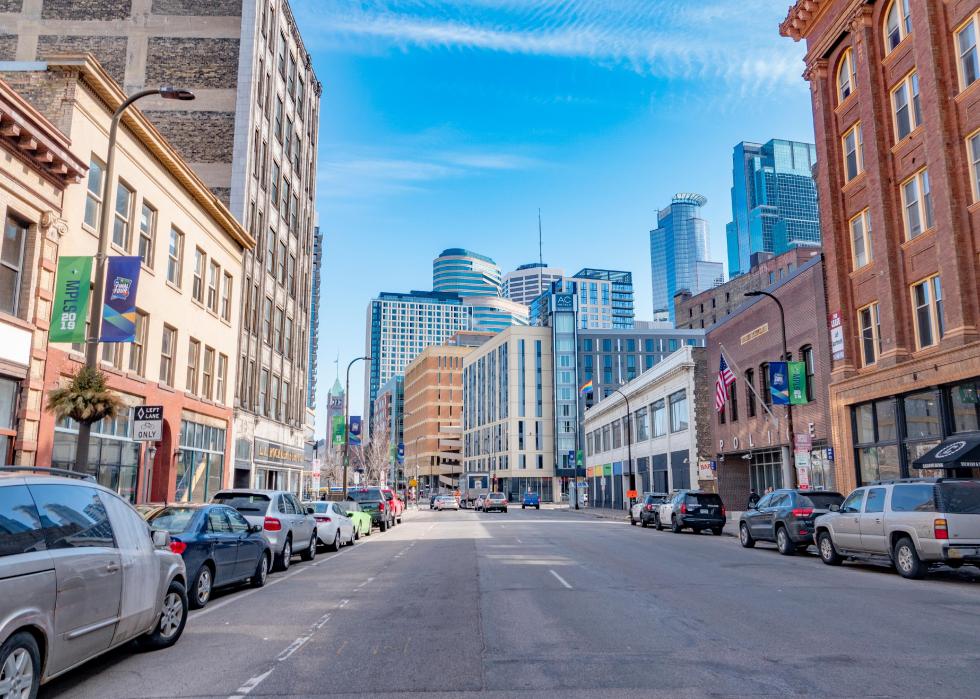
#15. Minnesota
- Change in weekly business foot traffic: -63.8%
- Change by industry:
--- Full-service restaurants: -75.7%
--- Limited-service restaurants: -52.4%
--- Fitness and recreational sports centers: -81.4%
--- Department stores: -58.4%
With more than 16% of the state’s population filing claims, Minnesota ranks #9 in terms of the percentage of the state population seeking unemployment compensation as of April 4. Women have been hit especially hard, with the bulk of the claims coming from the state’s female-dominated hospitality and leisure jobs.

#14. Pennsylvania
- Change in weekly business foot traffic: -63.8%
- Change by industry:
--- Full-service restaurants: -72.7%
--- Limited-service restaurants: -53.8%
--- Fitness and recreational sports centers: -81.4%
--- Department stores: -71.5%
Pennsylvania has experienced an economic impact that’s almost unrivaled in the United States, with 1.5 million workers—a full 23% of the workforce—filing unemployment claims as of April 18. Although it’s home to the major urban centers of Philadelphia and Pittsburgh, Pennsylvania also has vast and open rural areas. Although those less-populated counties have not been hit as hard by the virus itself, they’re especially vulnerable to the economic crisis caused by the steep drop in foot traffic.
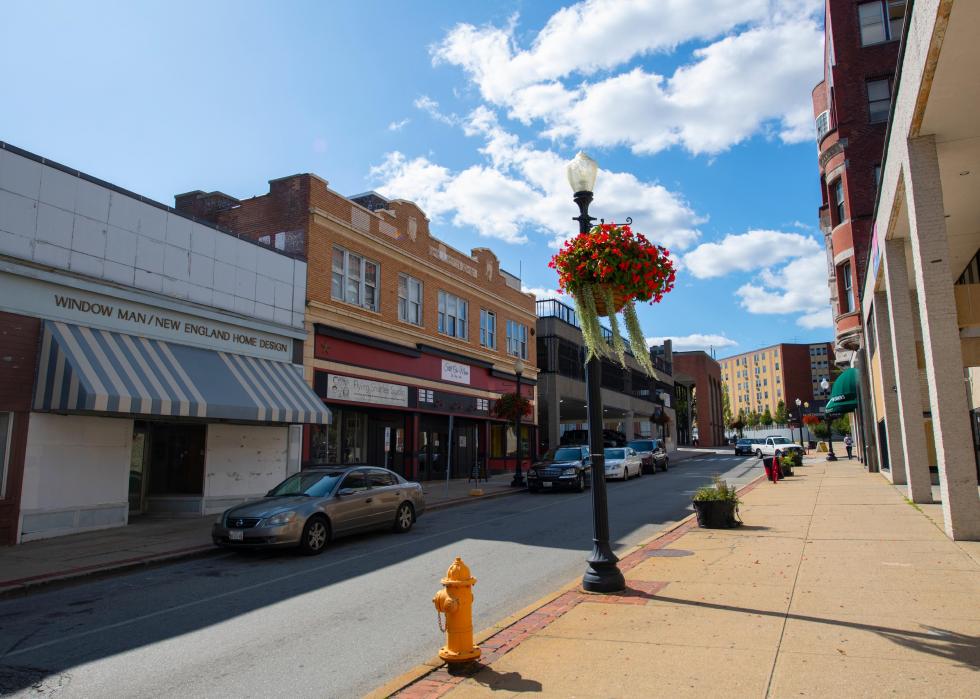
#13. Rhode Island
- Change in weekly business foot traffic: -63.9%
- Change by industry:
--- Full-service restaurants: -69.8%
--- Limited-service restaurants: -52.8%
--- Fitness and recreational sports centers: -78.3%
--- Department stores: -76.9%
Unlike many states that are either remaining closed or opening abruptly, Rhode Island has created a comprehensive three-phase plan to ease into reopening starting in early May. Phase 1 will keep significant restrictions in place while allowing limited social gatherings and expanding access to parks, beaches, dine-in restaurants, and services like dentistry.
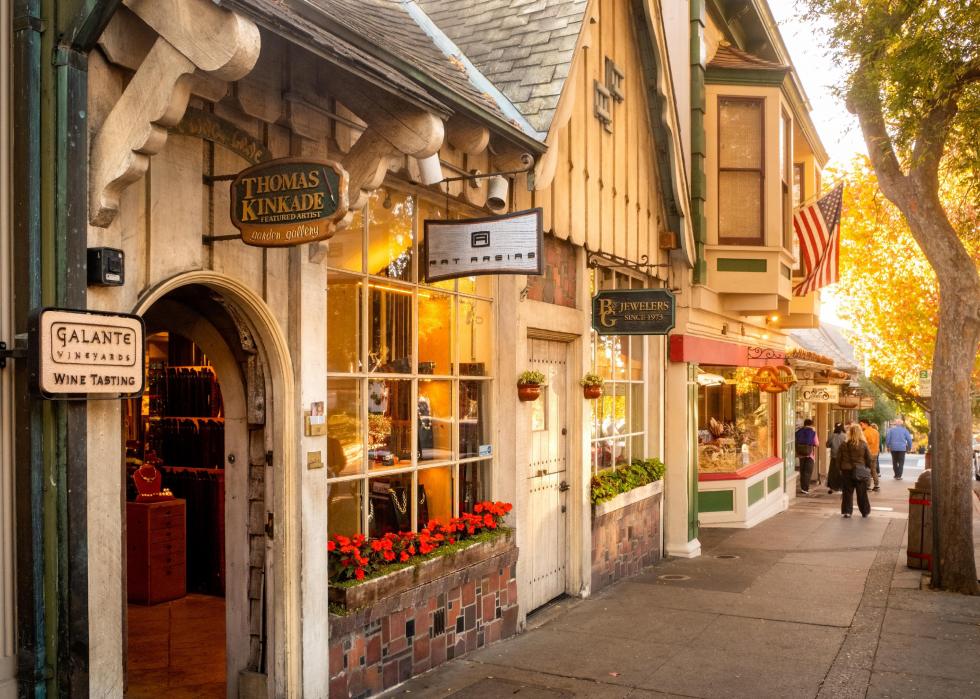
#12. California
- Change in weekly business foot traffic: -64.2%
- Change by industry:
--- Full-service restaurants: -70.5%
--- Limited-service restaurants: -54.7%
--- Fitness and recreational sports centers: -81.0%
--- Department stores: -67.6%
Early in the crisis, hotspots in Northern California like San Francisco and Santa Clara were the focus of the state's coronavirus crisis, but Southern California soon caught up. By the end of March, Los Angeles was front and center as ground zero in the Golden State. It's California's remote, poor, and rural counties, however, that are likely to suffer the most from the long-term economic impact of a statewide free-fall in foot traffic to businesses.
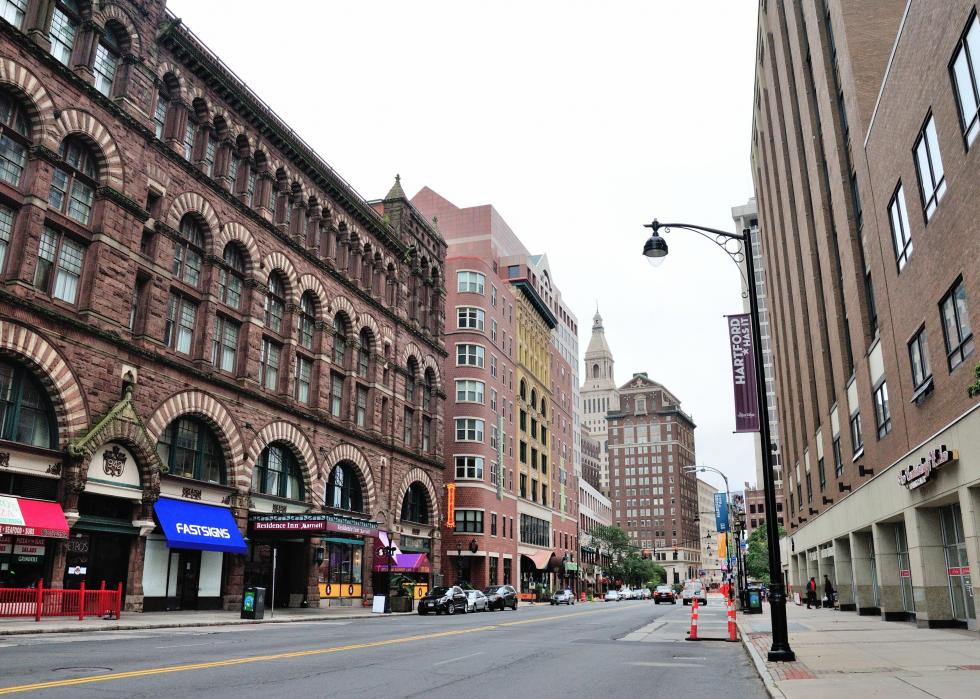
#11. Connecticut
- Change in weekly business foot traffic: -65.0%
- Change by industry:
--- Full-service restaurants: -70.1%
--- Limited-service restaurants: -52.0%
--- Fitness and recreational sports centers: -81.4%
--- Department stores: -70.8%
With many residents commuting to the Empire State for work, Connecticut has suffered one of the sharpest economic downturns in the country. Fairfield, New Haven, and Hartford Counties are at the forefront of the crisis. Statewide, officials expect that Connecticut will begin reopening its economy in early June.
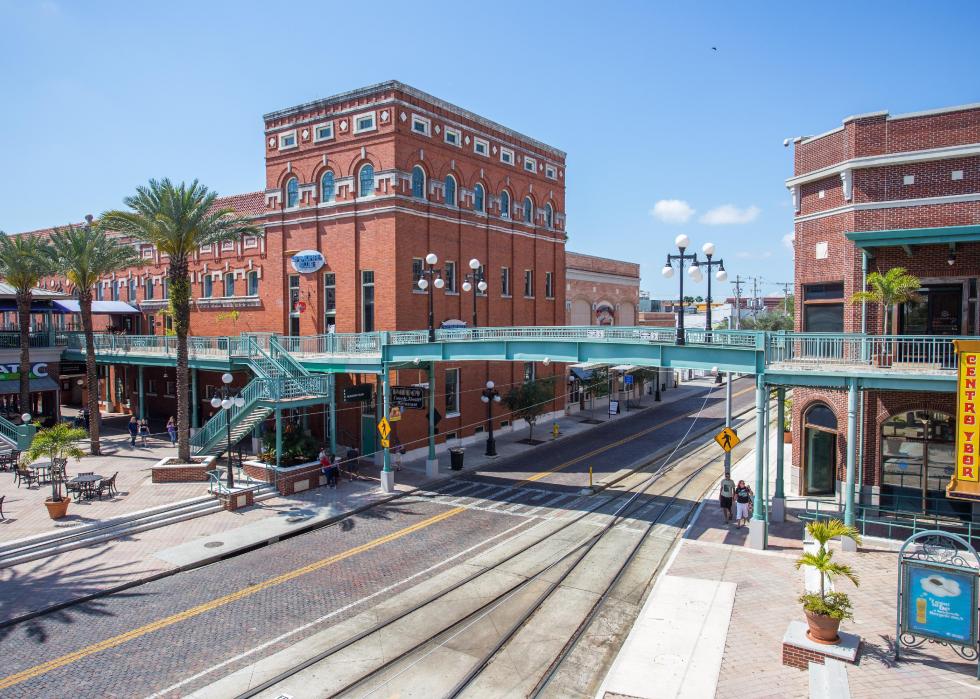
#10. Florida
- Change in weekly business foot traffic: -65.0%
- Change by industry:
--- Full-service restaurants: -76.7%
--- Limited-service restaurants: -52.2%
--- Fitness and recreational sports centers: -79.2%
--- Department stores: -72.7%
Florida—where photos of packed beaches went viral both early in the crisis and more recently—suffered more layoffs in a single month than it did in all of 2019 combined. About 72% of those layoffs were in the arts and entertainment, recreation, restaurant, and hotel sectors. Central Florida has suffered the most, with the Tampa Bay region accounting for more than 40% of layoffs and furloughs.
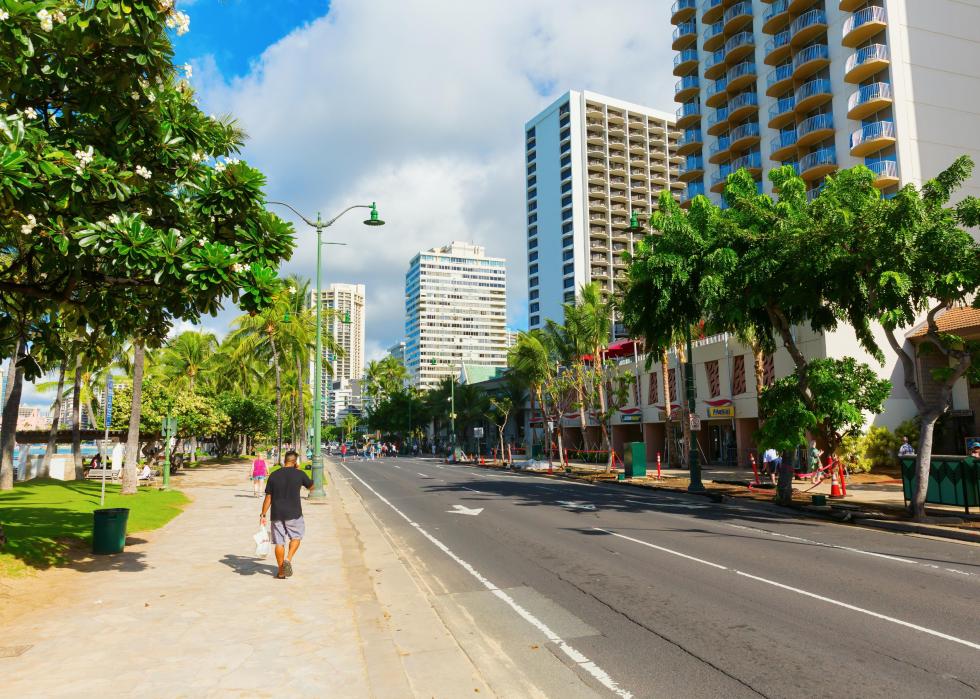
#9. Hawaii
- Change in weekly business foot traffic: -65.1%
- Change by industry:
--- Full-service restaurants: -70.0%
--- Limited-service restaurants: -52.4%
--- Fitness and recreational sports centers: -74.3%
--- Department stores: -61.7%
In tourism-dependent Hawaii, the economic fallout—not to mention 220,000 lost jobs (from January to April)—have not been divided up evenly throughout the state. Some industries have cut jobs by less than 1%, while others have exceeded 80%. The hardest hit has been the hotel industry, which shed 83% of its workforce between January and April.
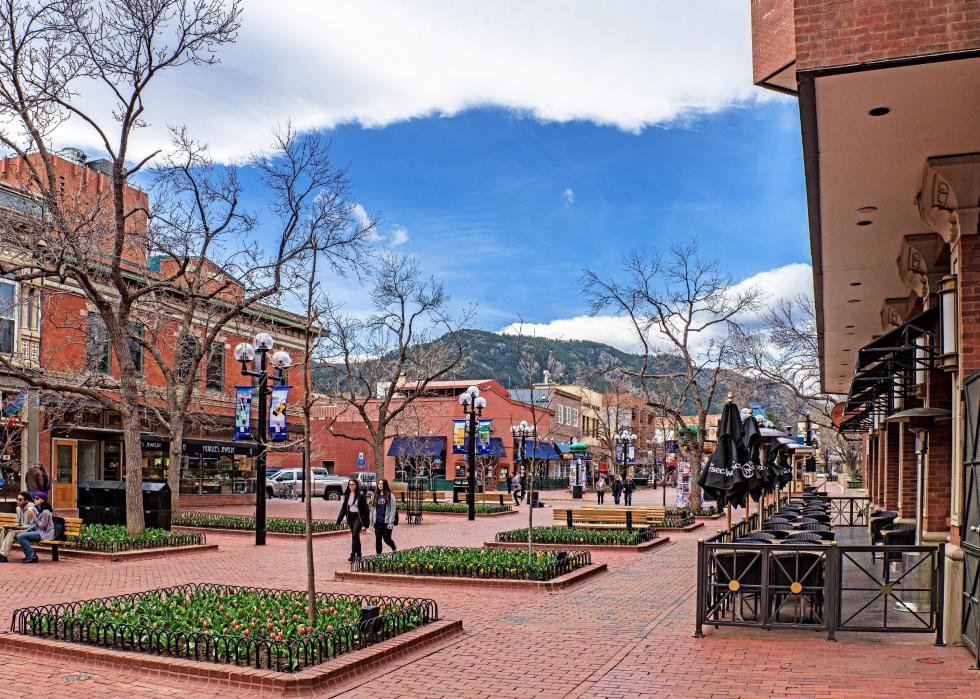
#8. Colorado
- Change in weekly business foot traffic: -66.0%
- Change by industry:
--- Full-service restaurants: -76.9%
--- Limited-service restaurants: -58.2%
--- Fitness and recreational sports centers: -82.7%
--- Department stores: -68.3%
Few states are suffering more than Colorado, where the virus-fueled economic implosion has eliminated one in 10 jobs in the state. Jobs in health care, retail, social assistance, and the state’s massive tourism and winter sports sectors have been hit the hardest.

#7. Nevada
- Change in weekly business foot traffic: -66.2%
- Change by industry:
--- Full-service restaurants: -78.1%
--- Limited-service restaurants: -51.0%
--- Fitness and recreational sports centers: -82.9%
--- Department stores: -72.6%
Las Vegas is what the New York Times' Sabrina Tavernise recently called "ground zero for the American jobs crisis." A full one-third of the economy there is based on the hospitality and leisure industry—more than any other major metro area in America. Virtually none of those jobs can be performed remotely.
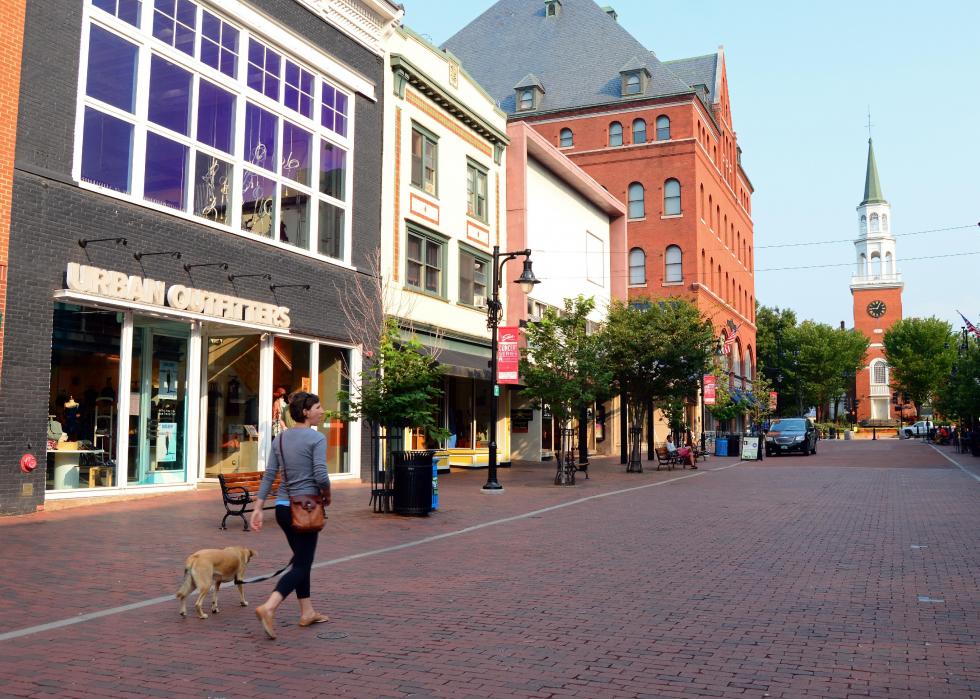
#6. Vermont
- Change in weekly business foot traffic: -67.2%
- Change by industry:
--- Full-service restaurants: -80.7%
--- Limited-service restaurants: -53.0%
--- Fitness and recreational sports centers: -80.7%
--- Department stores: -82.9%
Small, remote, and one of the most rural states in America, Vermont is making plans to slowly reopen its economy, which has been battered by the virus more thoroughly than its residents themselves. It’s going to start by opening the state’s famous farmers markets—with several restrictions in place as it moves forward.
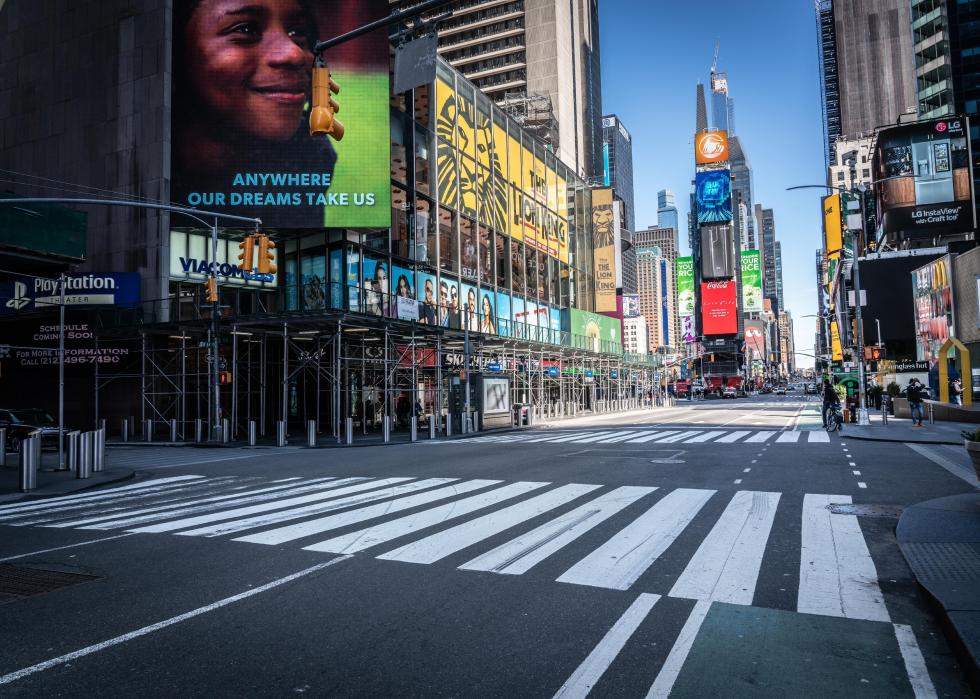
#5. New York
- Change in weekly business foot traffic: -68.5%
- Change by industry:
--- Full-service restaurants: -72.0%
--- Limited-service restaurants: -62.5%
--- Fitness and recreational sports centers: -82.0%
--- Department stores: -74.1%
America is the epicenter of the global coronavirus crisis, and New York is the epicenter of the country's crisis. While Gov. Andrew Cuomo’s daily briefings have unified and guided the state as a whole, there are few places in America where geographical disparities are stronger. New York City, where there are as many as 70,000 people per square mile, has been hit much harder than Upstate counties, some of which are home to as few as three people per square mile.

#4. Massachusetts
- Change in weekly business foot traffic: -68.5%
- Change by industry:
--- Full-service restaurants: -73.7%
--- Limited-service restaurants: -60.5%
--- Fitness and recreational sports centers: -82.0%
--- Department stores: -70.0%
Massachusetts is the heart of New England, where states are disproportionately represented among those with the steepest drop-offs in foot traffic. Even so, it was recently estimated—shockingly—that 62% of businesses in New England are still hiring throughout the pandemic.
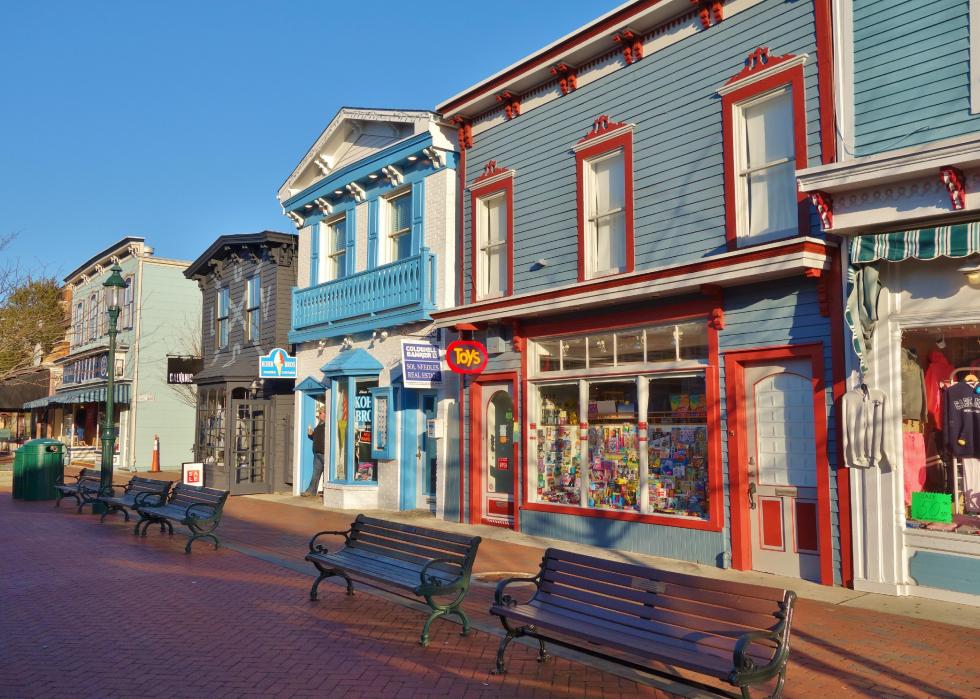
#3. New Jersey
- Change in weekly business foot traffic: -69.2%
- Change by industry:
--- Full-service restaurants: -72.7%
--- Limited-service restaurants: -57.8%
--- Fitness and recreational sports centers: -84.4%
--- Department stores: -71.6%
New Jersey is the most densely populated state in the Union, a neighbor of New York, and the only other state with six-figure confirmed cases—and there’s a steep north/south divide. North Jersey, and the New York City metro region in general, has fared the worst. Teaneck in Bergen County, a main feeder for the George Washington Bridge, emerged early as the hardest-hit town in the state.
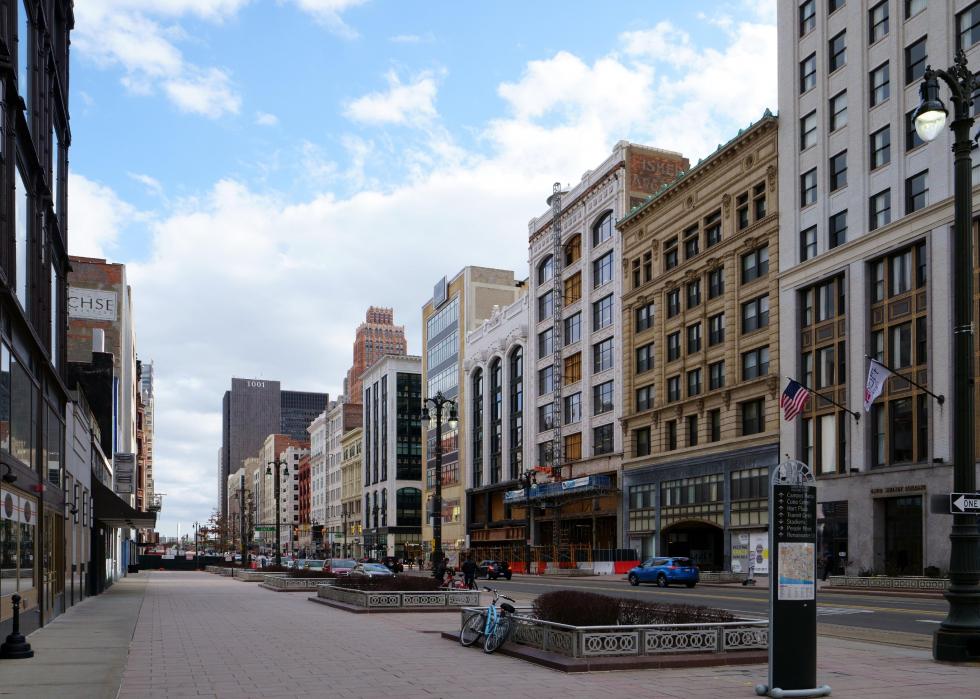
#2. Michigan
- Change in weekly business foot traffic: -69.5%
- Change by industry:
--- Full-service restaurants: -80.1%
--- Limited-service restaurants: -60.2%
--- Fitness and recreational sports centers: -88.4%
--- Department stores: -80.8%
In terms of both unemployment claims and reduction in foot traffic, few states have been impacted more than Michigan—one in five people are now unemployed. There is, however, significant geographic and demographic disparity. The counties with better-educated "new economy" workforces are faring much better than the more blue-collar, monoculture "old economy" counties.
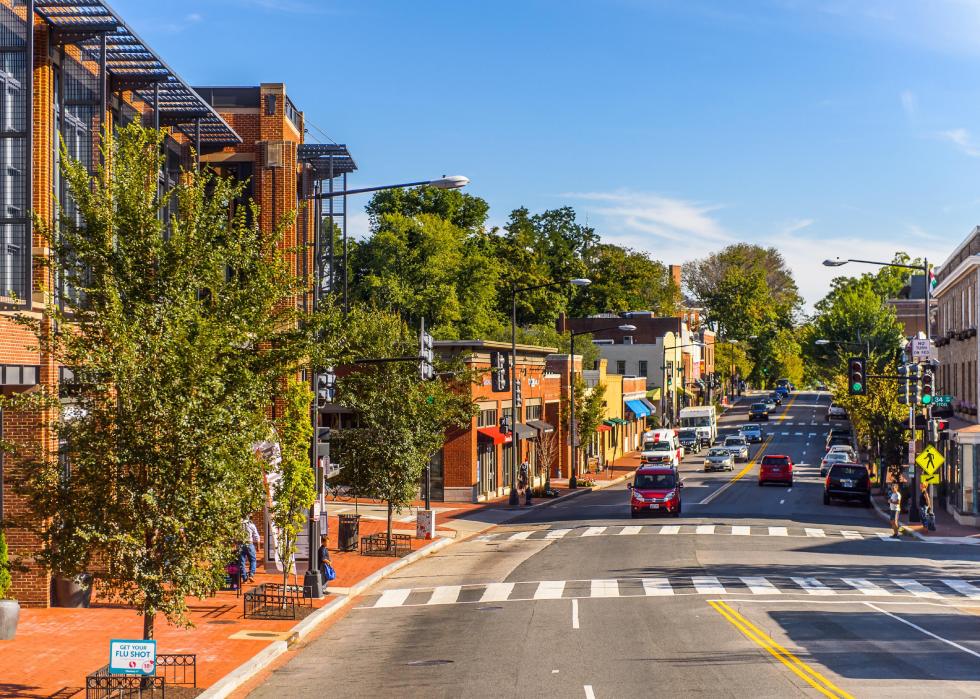
#1. Washington D.C.
- Change in weekly business foot traffic: -72.5%
- Change by industry:
--- Full-service restaurants: -81.9%
--- Limited-service restaurants: -76.4%
--- Fitness and recreational sports centers: -76.2%
--- Department stores: -79.2%
No place in America has lost more foot traffic than the nation’s capital, where, as of April 24, 93,000 jobs have been lost, mostly in the hospitality industry. About 40% of the District’s restaurants are closed while those that remain open are bringing in about 20% of their previous revenue. City leaders expect it will take two years for the District’s economy to recover.



